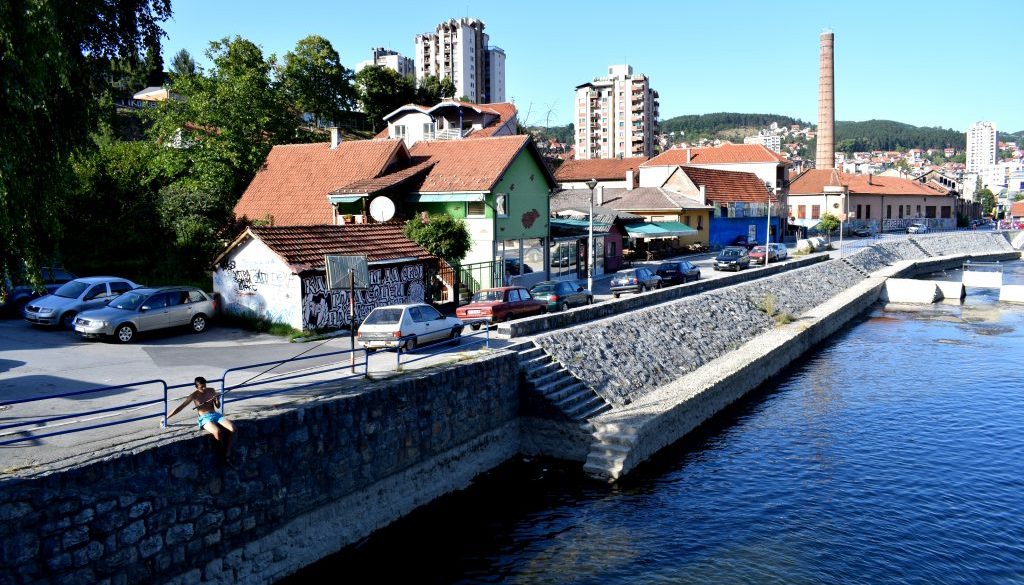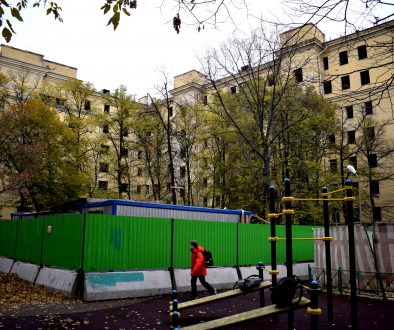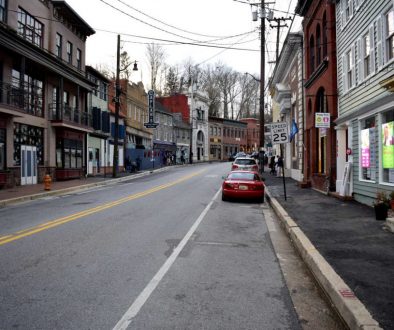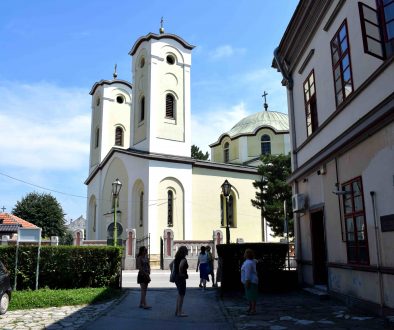Nestled away in the western mountains of Serbia on the main road headed from Belgrade toward Sarajevo is a city few tourists visit and even fewer foreigners have heard of.
That city is Uzice.
And despite an interesting history, friendly locals, great food and beautiful surroundings, poor infrastructure links leave it cut off from only the most determined travelers.
It’s a shame. Because Uzice is one of those tourist gems. A city with huge potential that has yet to take its place on Europe’s travel map.
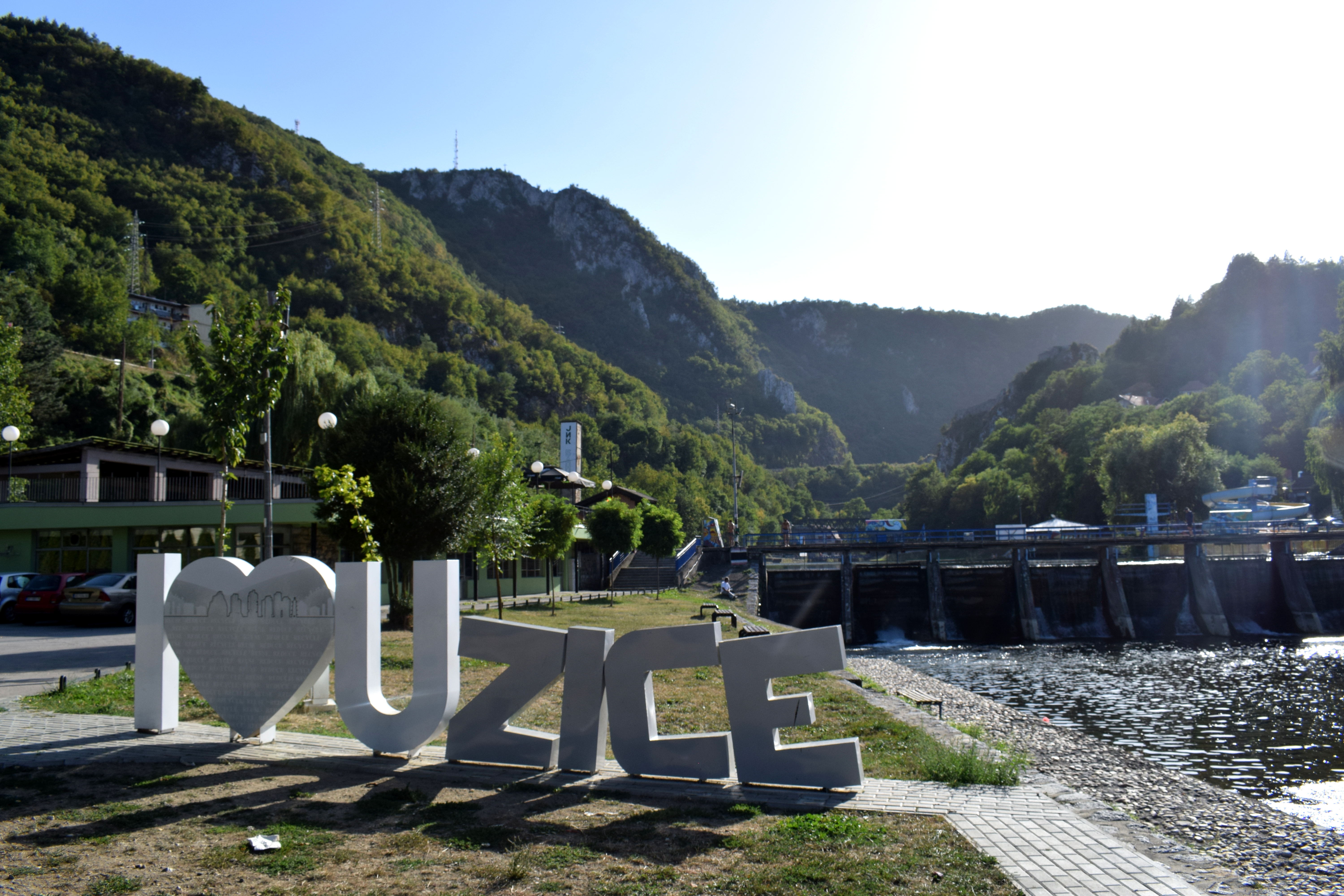 We took a bus from Sarajevo to get to Uzice. Although the two cities look close on a map, the road passes through some of the steepest mountains in the Balkans so the trip took four hours.
We took a bus from Sarajevo to get to Uzice. Although the two cities look close on a map, the road passes through some of the steepest mountains in the Balkans so the trip took four hours.
The spectacular scenery made the ride worth it. We were aided along on our journey by some of the best Turkish coffee in the Balkans.
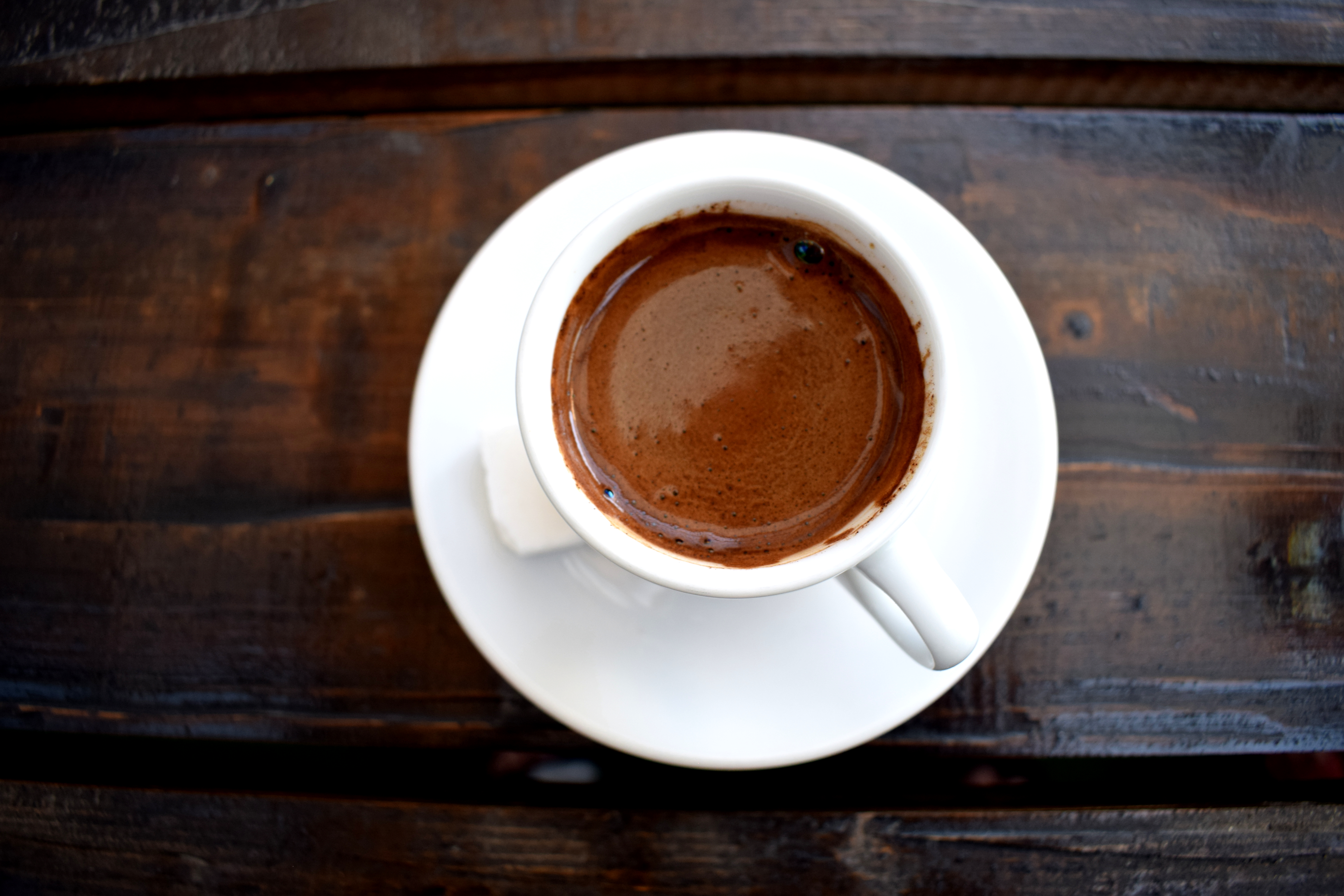 In addition to the coffee, we also got to try mouthwatering smoked lamb, or ‘janjetina’ as locals call it. Smoked lamb is a traditional meal in the Balkans and is served with meat and more meat. Vegans beware.
In addition to the coffee, we also got to try mouthwatering smoked lamb, or ‘janjetina’ as locals call it. Smoked lamb is a traditional meal in the Balkans and is served with meat and more meat. Vegans beware.
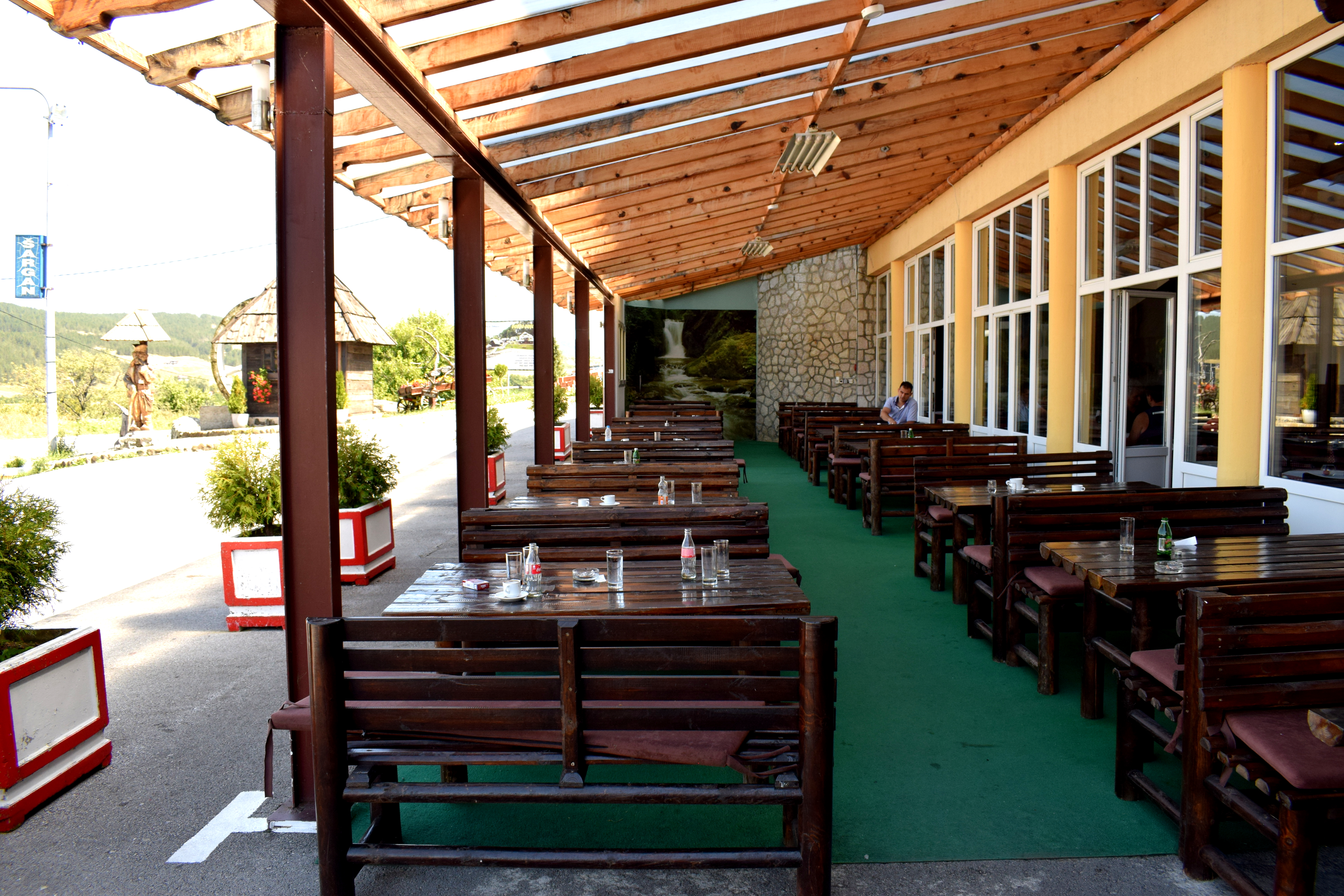 When we arrived at Uzice we were dropped off next to a picturesque river near the central bus station.
When we arrived at Uzice we were dropped off next to a picturesque river near the central bus station.
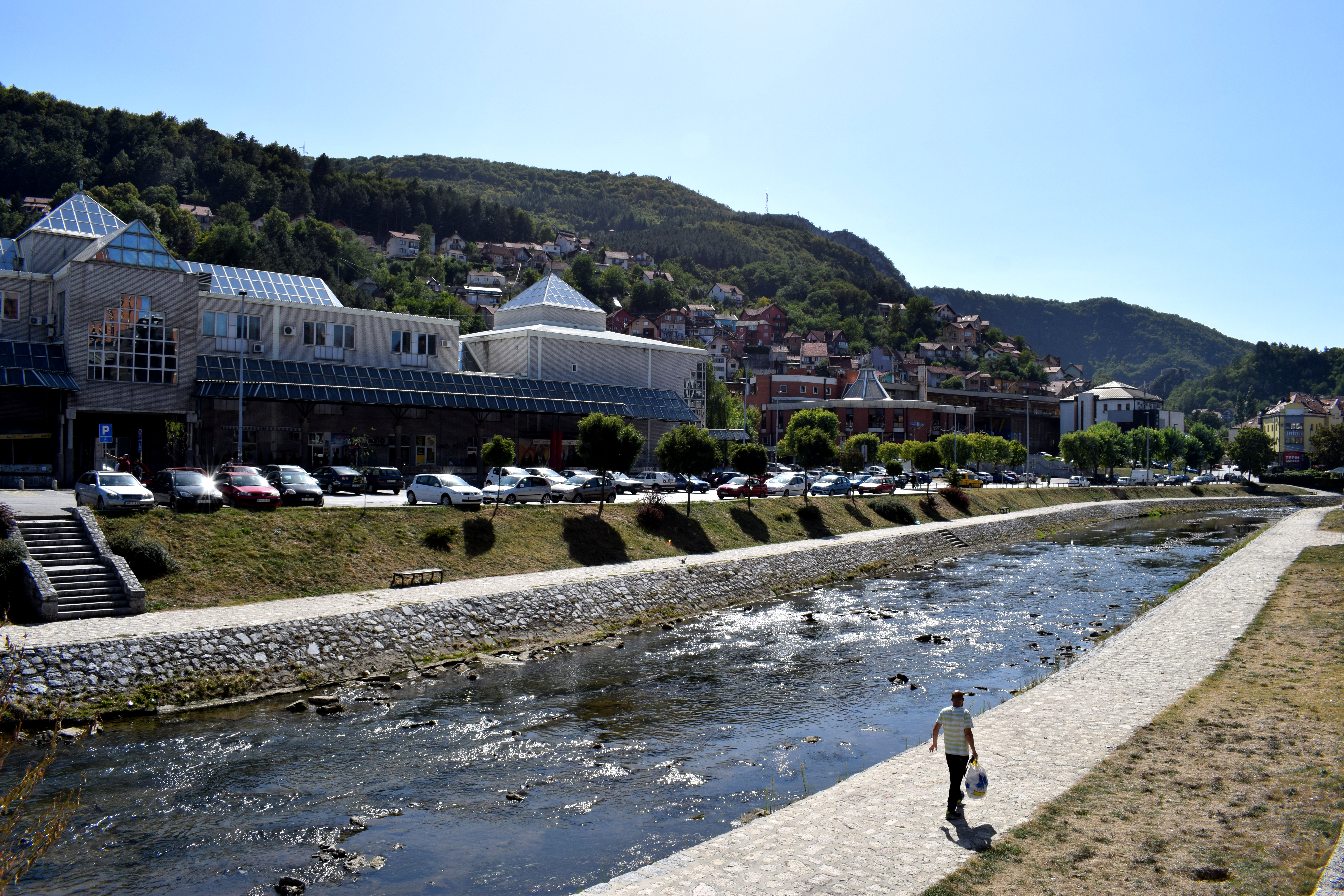 This was the Djetinja River, eventually merging with the West Moraver River in Serbia and onward with the Danube.
This was the Djetinja River, eventually merging with the West Moraver River in Serbia and onward with the Danube.
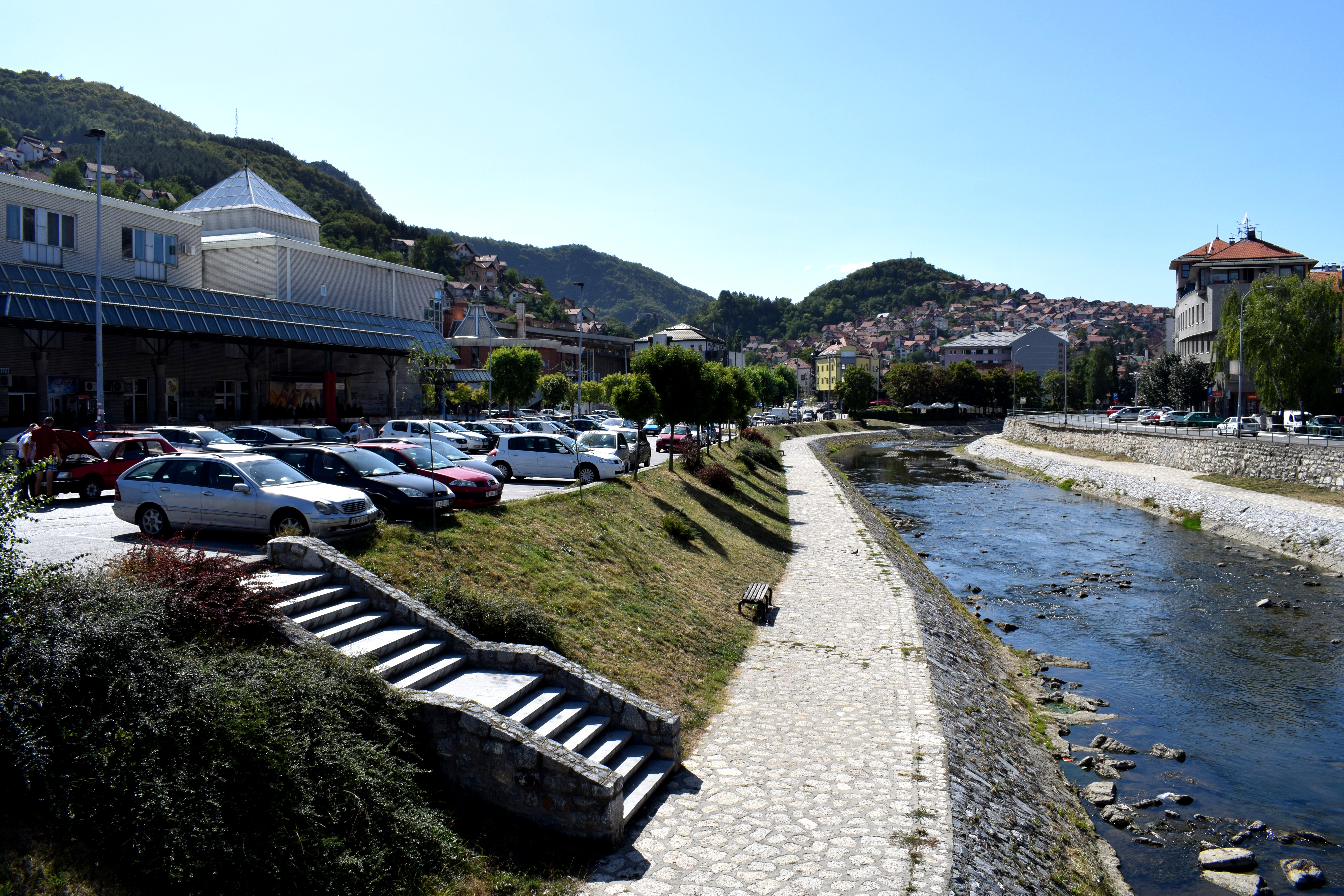 The Balkans is known for having fresh, clean water and Uzice is no exception. There were several fountains around the city which you could drink freely from.
The Balkans is known for having fresh, clean water and Uzice is no exception. There were several fountains around the city which you could drink freely from.
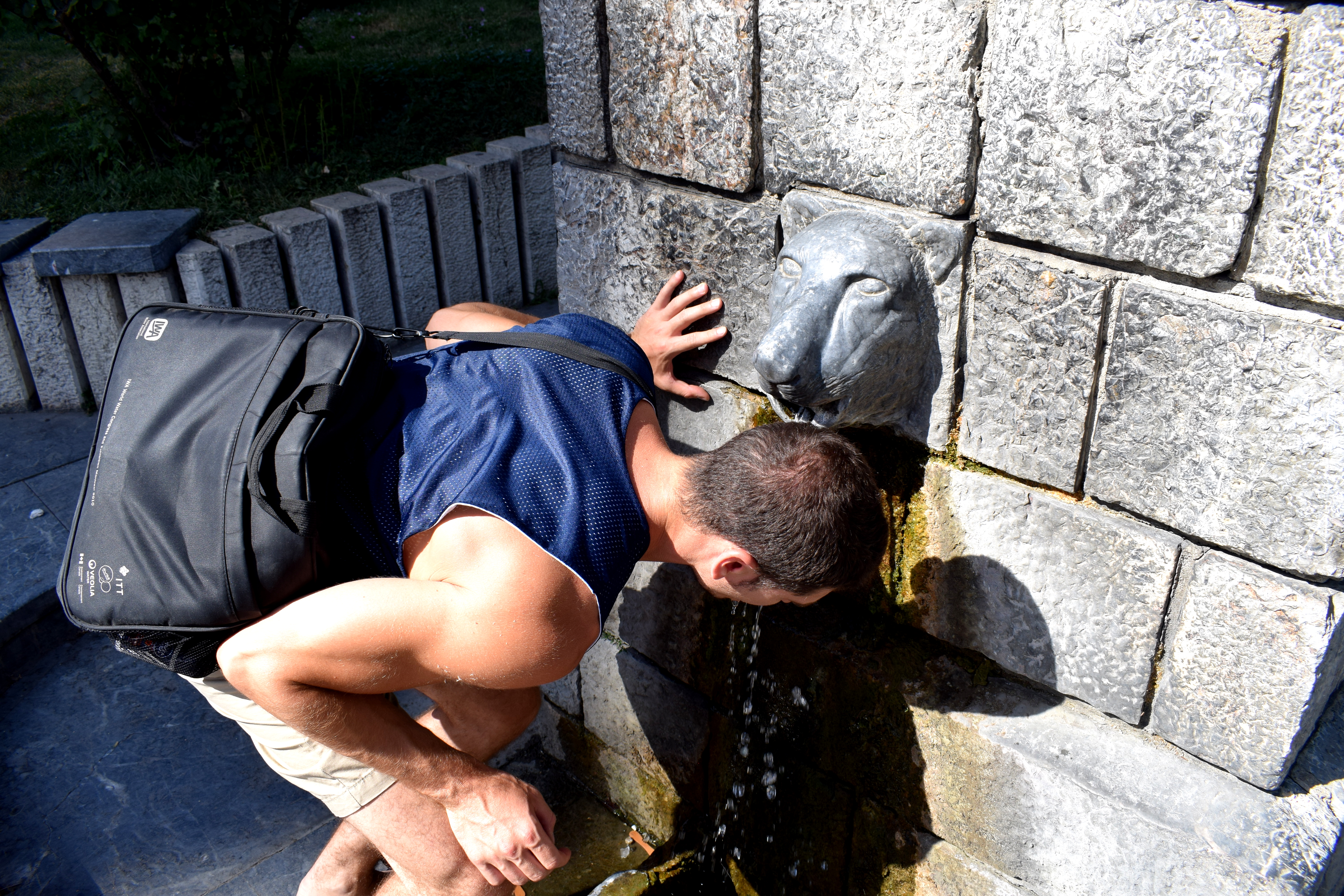 Uzice unfortunately suffered significant damage in WWII and much of the old center was destroyed. One square which survived was the Square of St. Sava, located a short walk away from the bus station. The square includes Aljo’s Fountain, built in 1900 and the Uzice Grammar School, one of the first elementary schools in Serbia, built in 1839.
Uzice unfortunately suffered significant damage in WWII and much of the old center was destroyed. One square which survived was the Square of St. Sava, located a short walk away from the bus station. The square includes Aljo’s Fountain, built in 1900 and the Uzice Grammar School, one of the first elementary schools in Serbia, built in 1839.
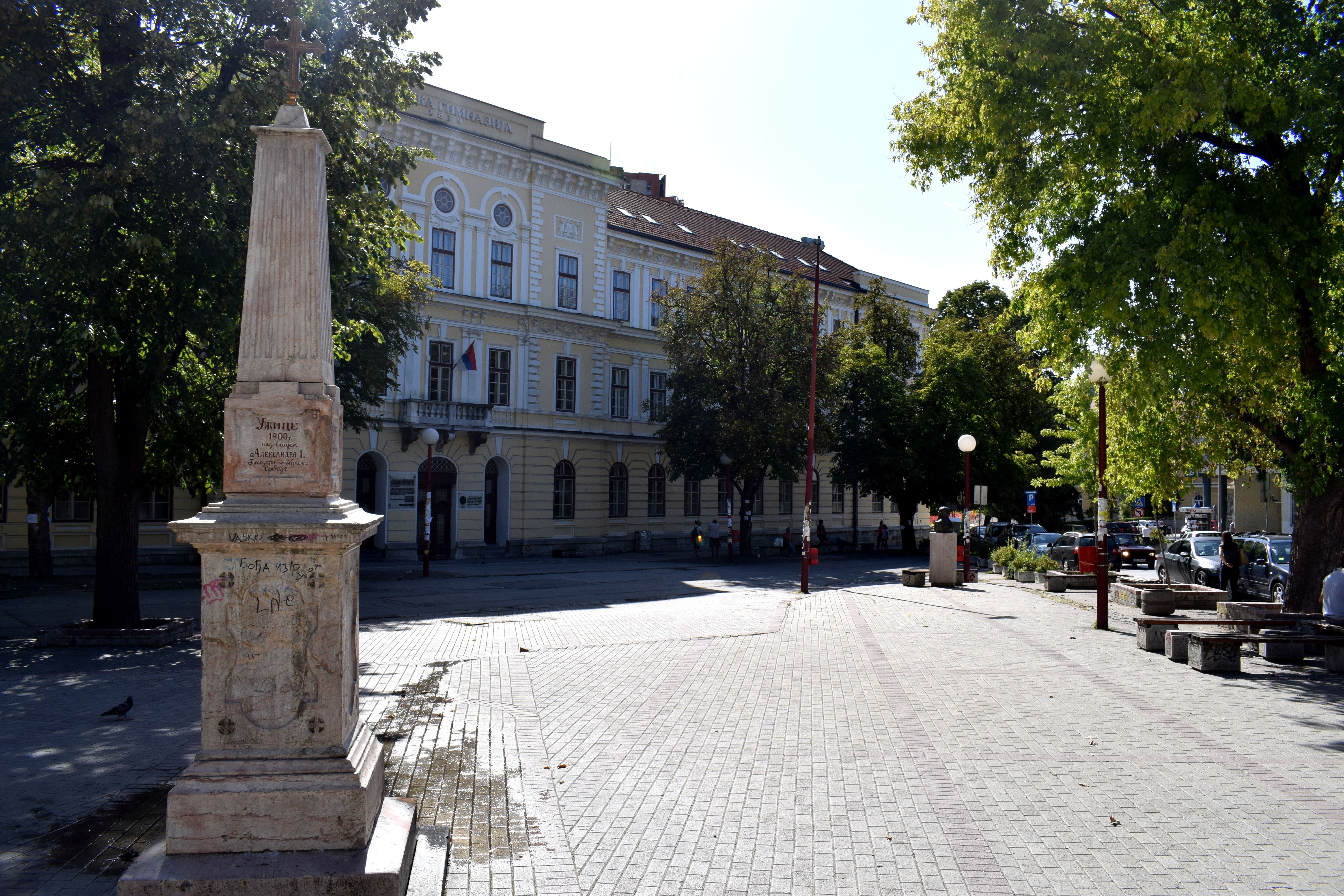 Behind the fountain is Saint George’s Cathedral, the largest Orthodox church in Uzice, built in 1842-1844.
Behind the fountain is Saint George’s Cathedral, the largest Orthodox church in Uzice, built in 1842-1844.
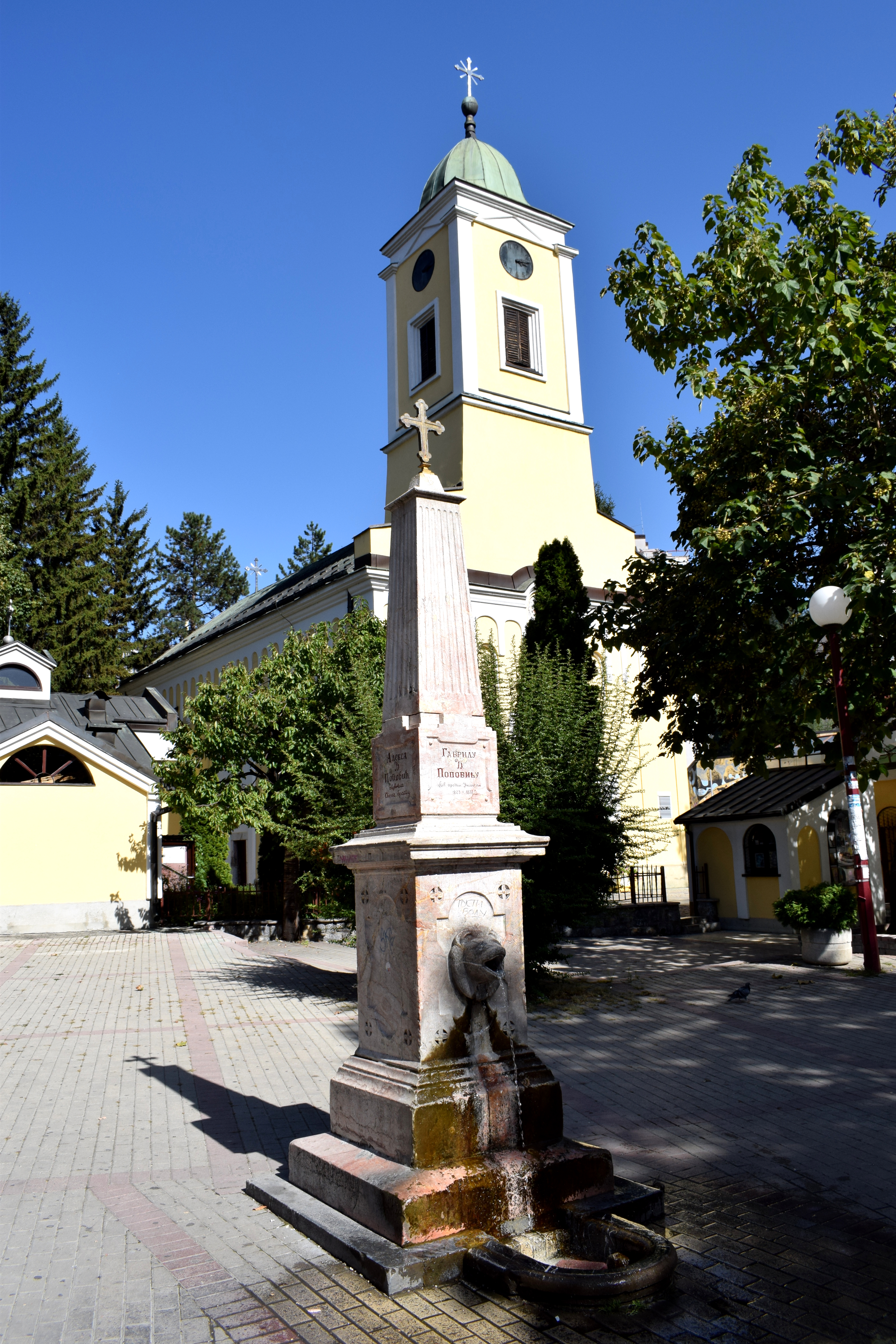 The entrance to the church.
The entrance to the church.
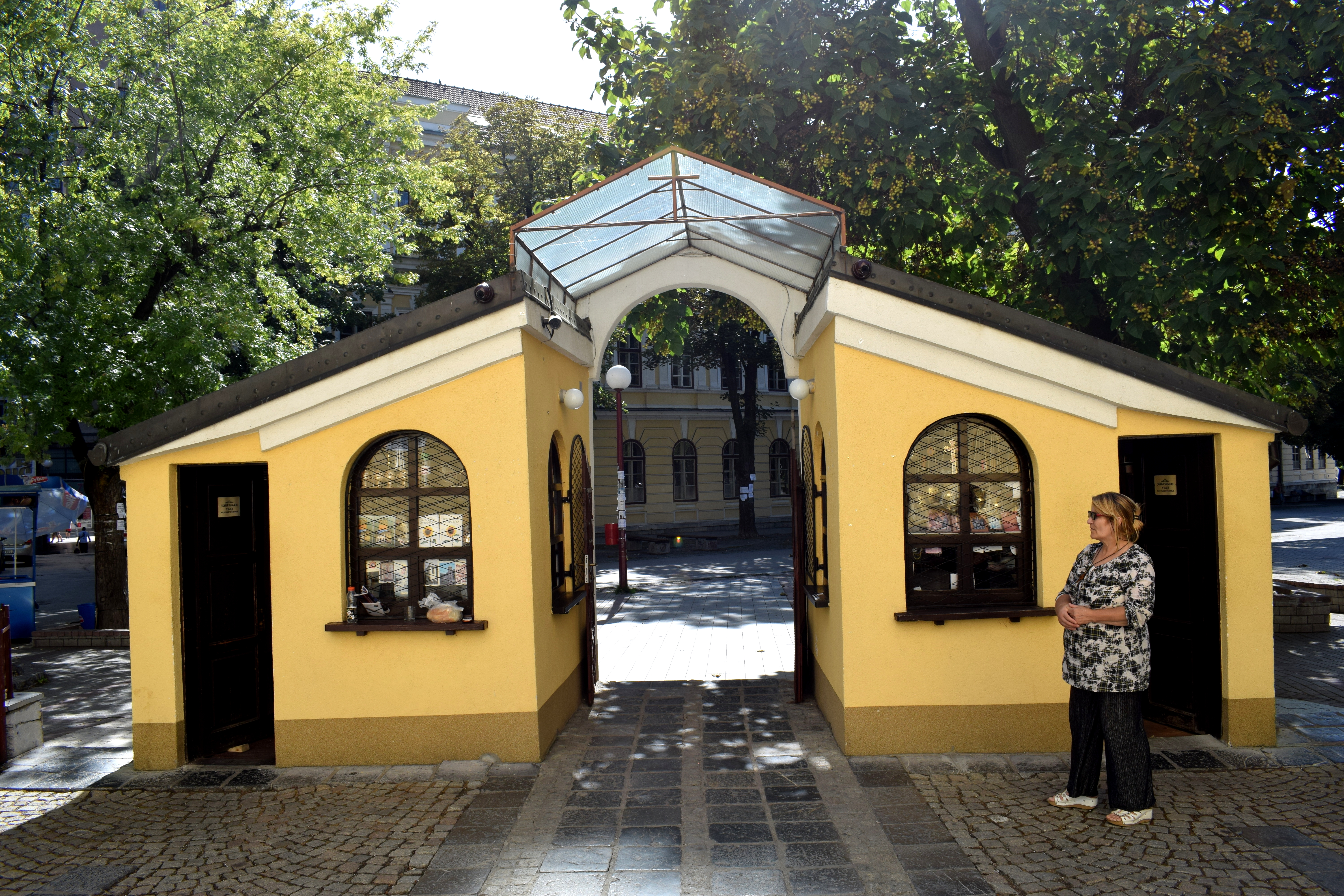 Engraved on the church’s wall is a list of soldiers from Uzice who died during the Balkan Wars (1912-1913) and WWI (1914-1918).
Engraved on the church’s wall is a list of soldiers from Uzice who died during the Balkan Wars (1912-1913) and WWI (1914-1918).
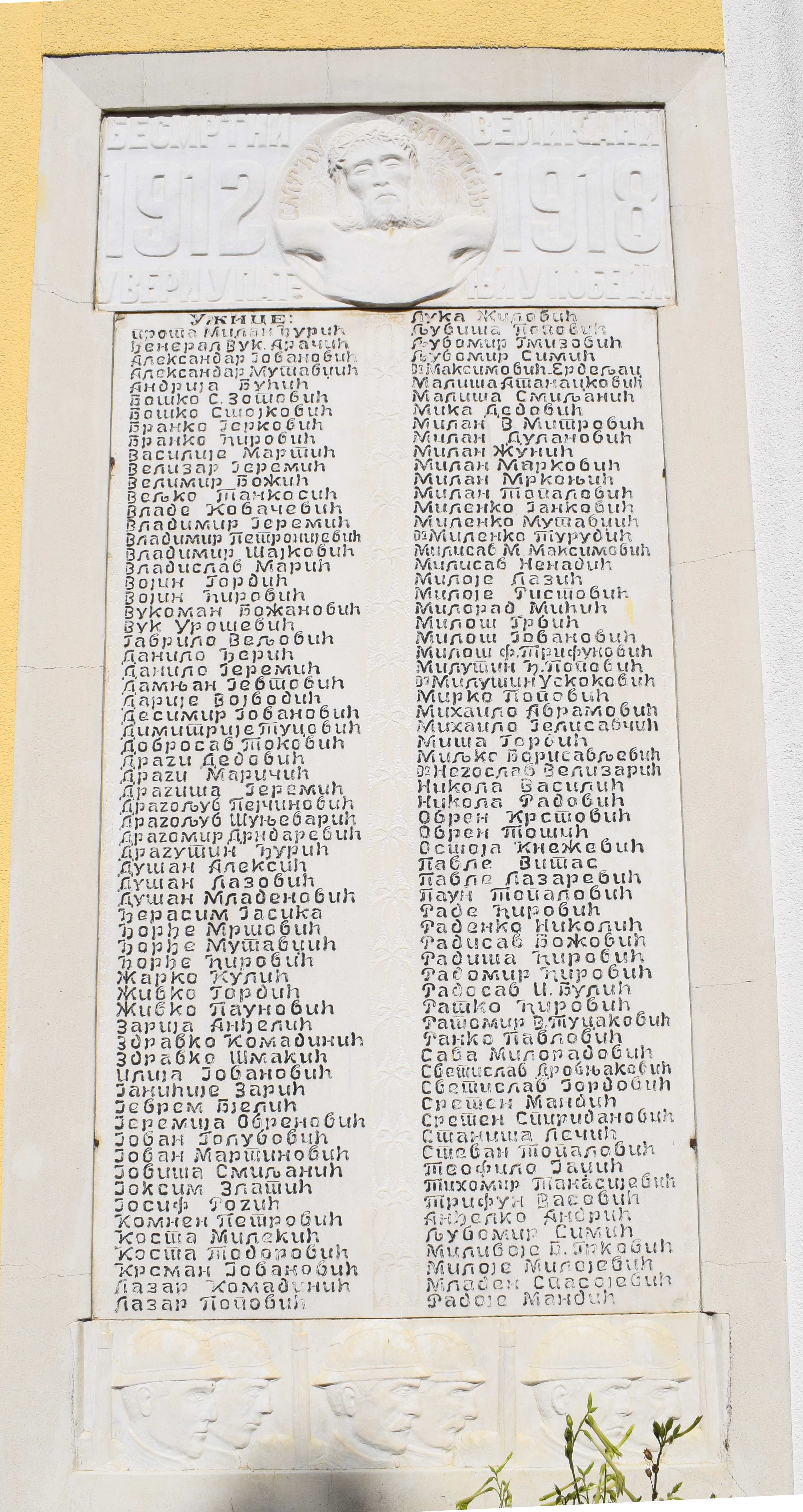 The church from the back.
The church from the back.
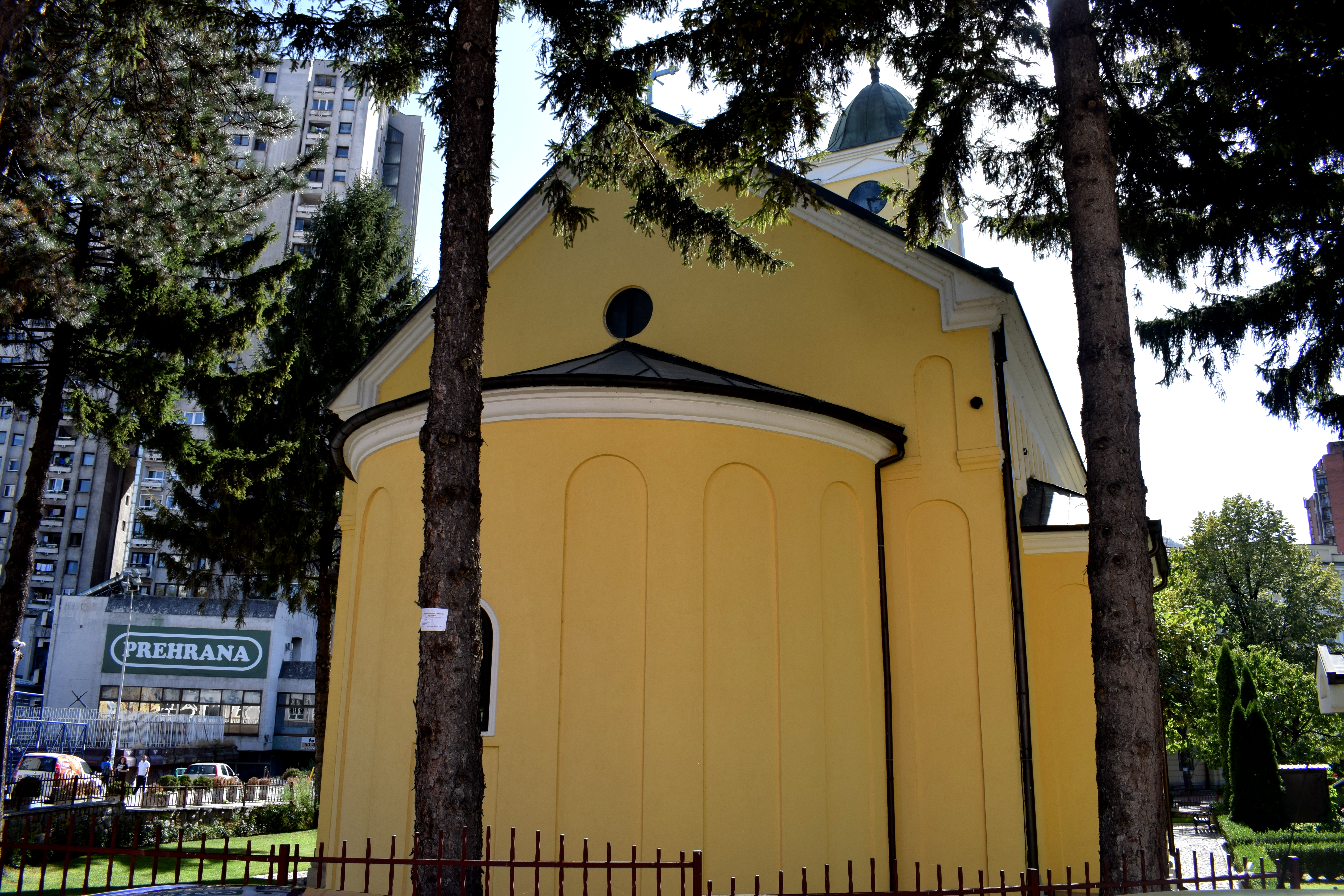 Uzice first became tied to Serbian history in 1180 when the Serbian Grand Prince Stefan Nemanja incorporated it into the medieval Serbian state of Raska. Although a small city at the time, Uzice was situated on a strategically-important road connecting the mountainous Balkan interior to the Adriatic coast. When Serbia fell to the Turks in 1459, the city held out for a few years before finally succumbing in 1463. The Turks would rule the region until the early 1800’s when the city was liberated during the First Serbian Rising in 1807. Uzice developed rapidly afterward. Most of the old buildings in the center date back to this period.
Uzice first became tied to Serbian history in 1180 when the Serbian Grand Prince Stefan Nemanja incorporated it into the medieval Serbian state of Raska. Although a small city at the time, Uzice was situated on a strategically-important road connecting the mountainous Balkan interior to the Adriatic coast. When Serbia fell to the Turks in 1459, the city held out for a few years before finally succumbing in 1463. The Turks would rule the region until the early 1800’s when the city was liberated during the First Serbian Rising in 1807. Uzice developed rapidly afterward. Most of the old buildings in the center date back to this period.
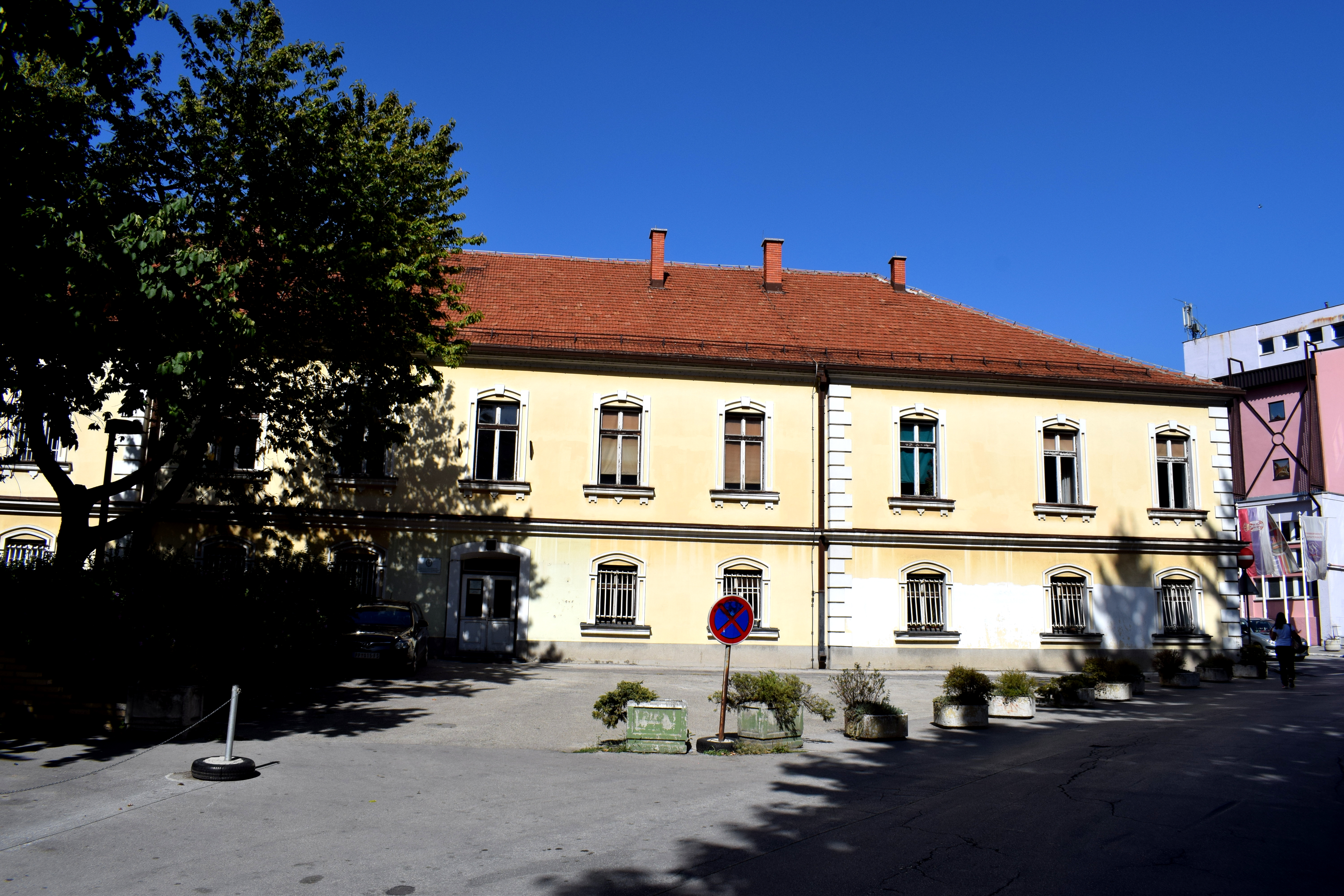 WWII destroyed much of the 19th century architecture. When the communists seized power after the war they preferred to showcase socialist architecture instead of restoring the old buildings. As a result, there is a sharp contrast in the city center between the socialist grey concrete buildings erected after the war and the old 19th century buildings reminiscent of an earlier era.
WWII destroyed much of the 19th century architecture. When the communists seized power after the war they preferred to showcase socialist architecture instead of restoring the old buildings. As a result, there is a sharp contrast in the city center between the socialist grey concrete buildings erected after the war and the old 19th century buildings reminiscent of an earlier era.
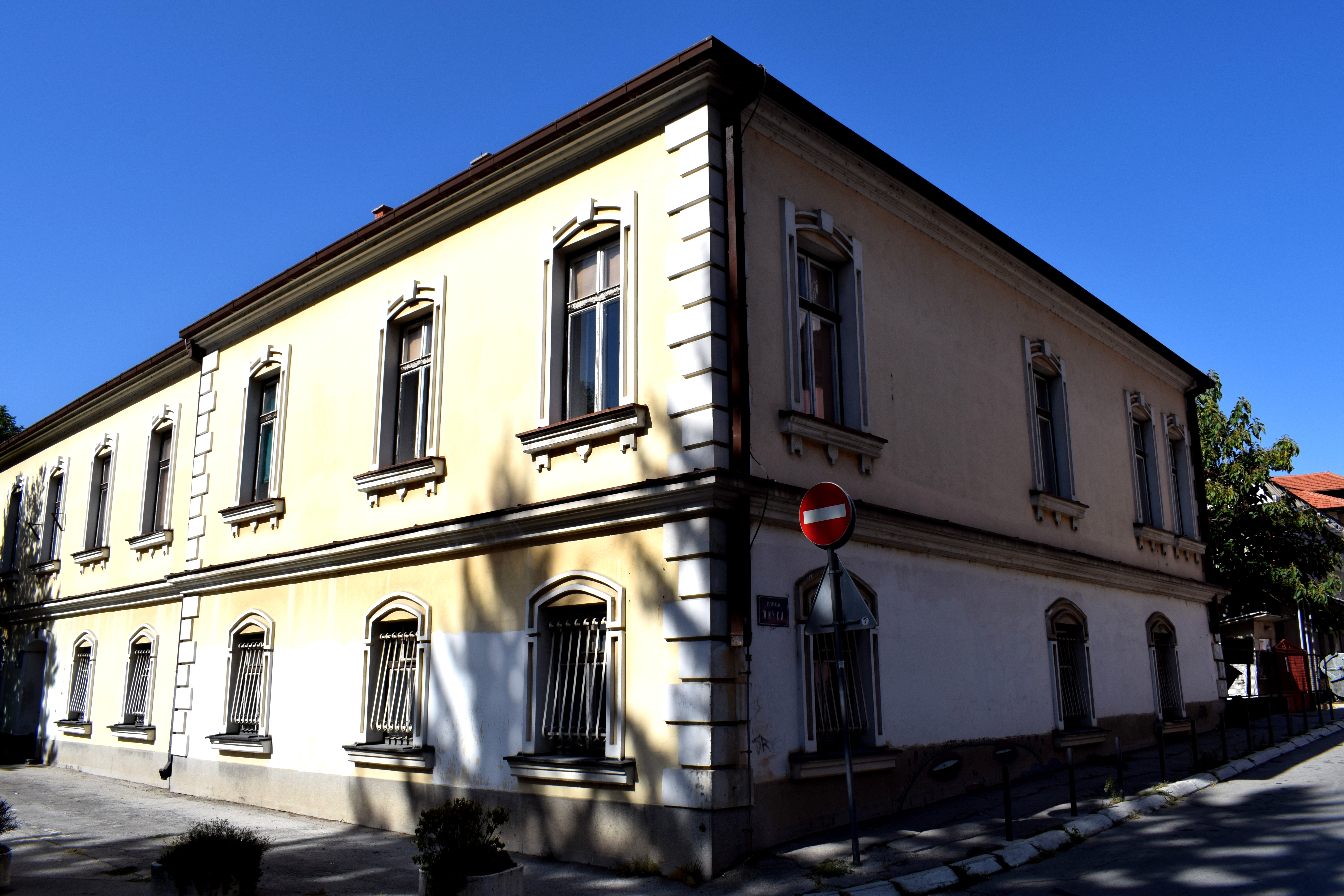 Thankfully the city is trying to preserve these pockets of 19th century buildings. There is an active renovation program underway. The Uzice Grammar School built in 1839 is one of the buildings that has been renovated under the program.
Thankfully the city is trying to preserve these pockets of 19th century buildings. There is an active renovation program underway. The Uzice Grammar School built in 1839 is one of the buildings that has been renovated under the program.
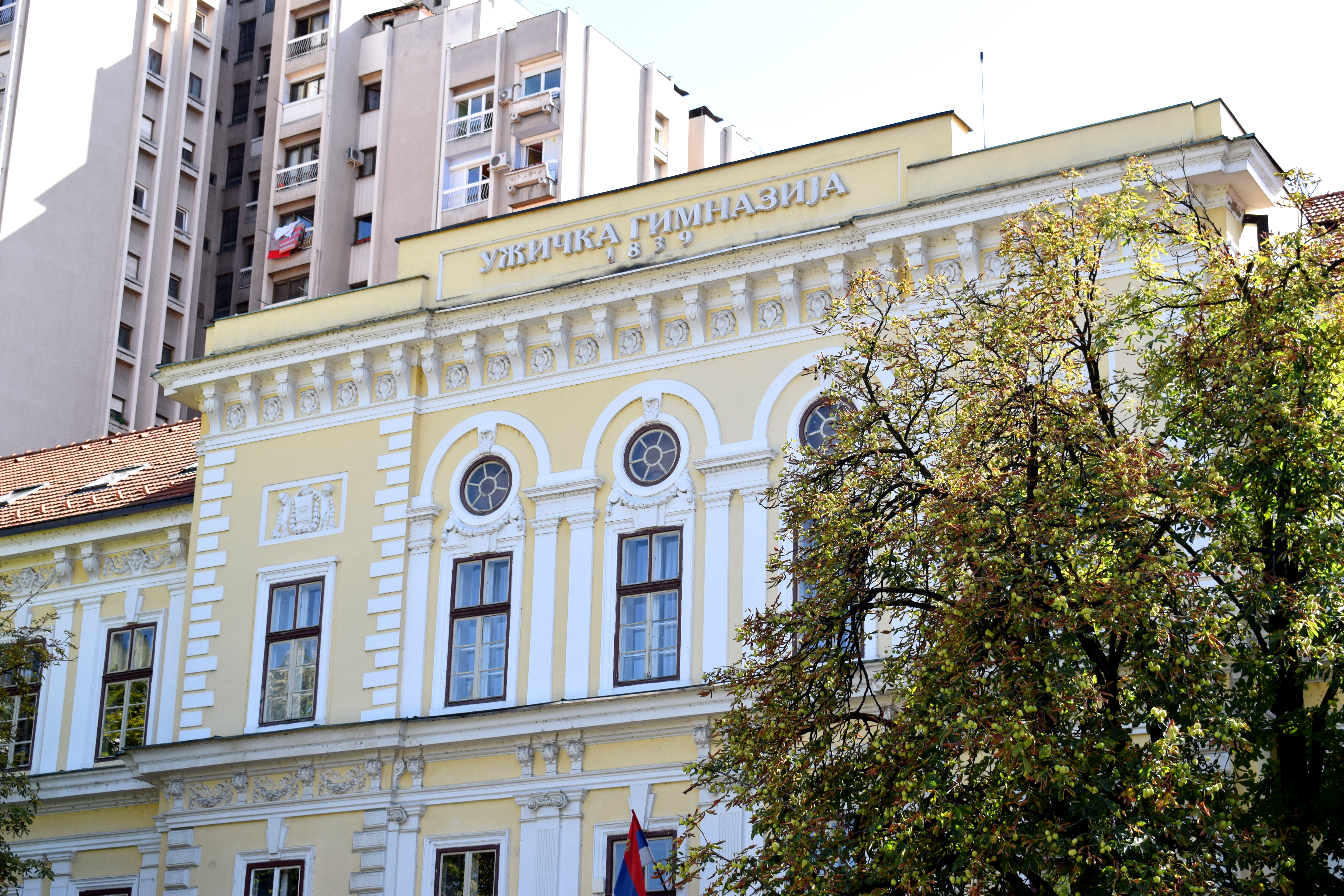 Another is the city council, where the mayor and city parliament are located. Construction began here in June 2017.
Another is the city council, where the mayor and city parliament are located. Construction began here in June 2017.
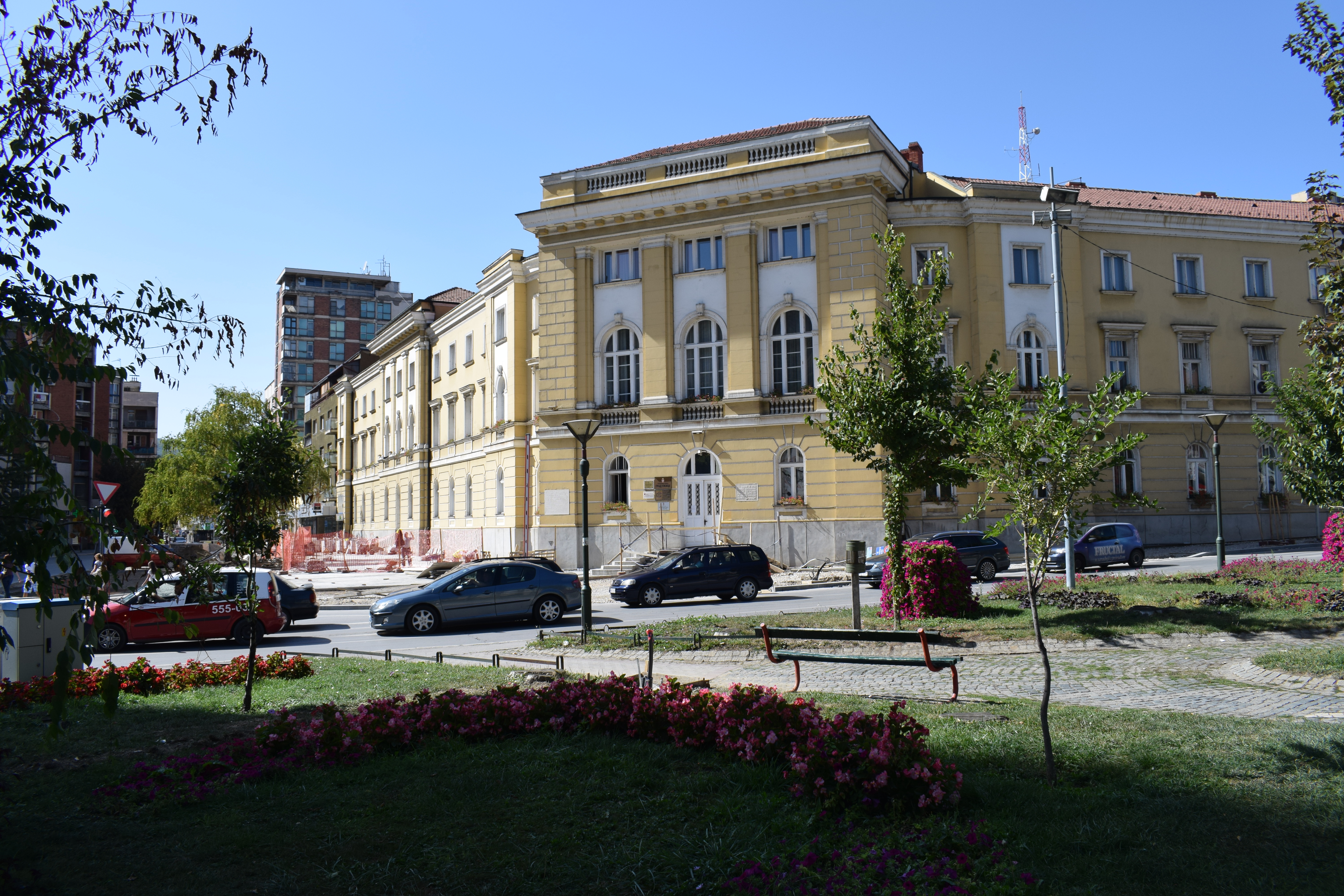
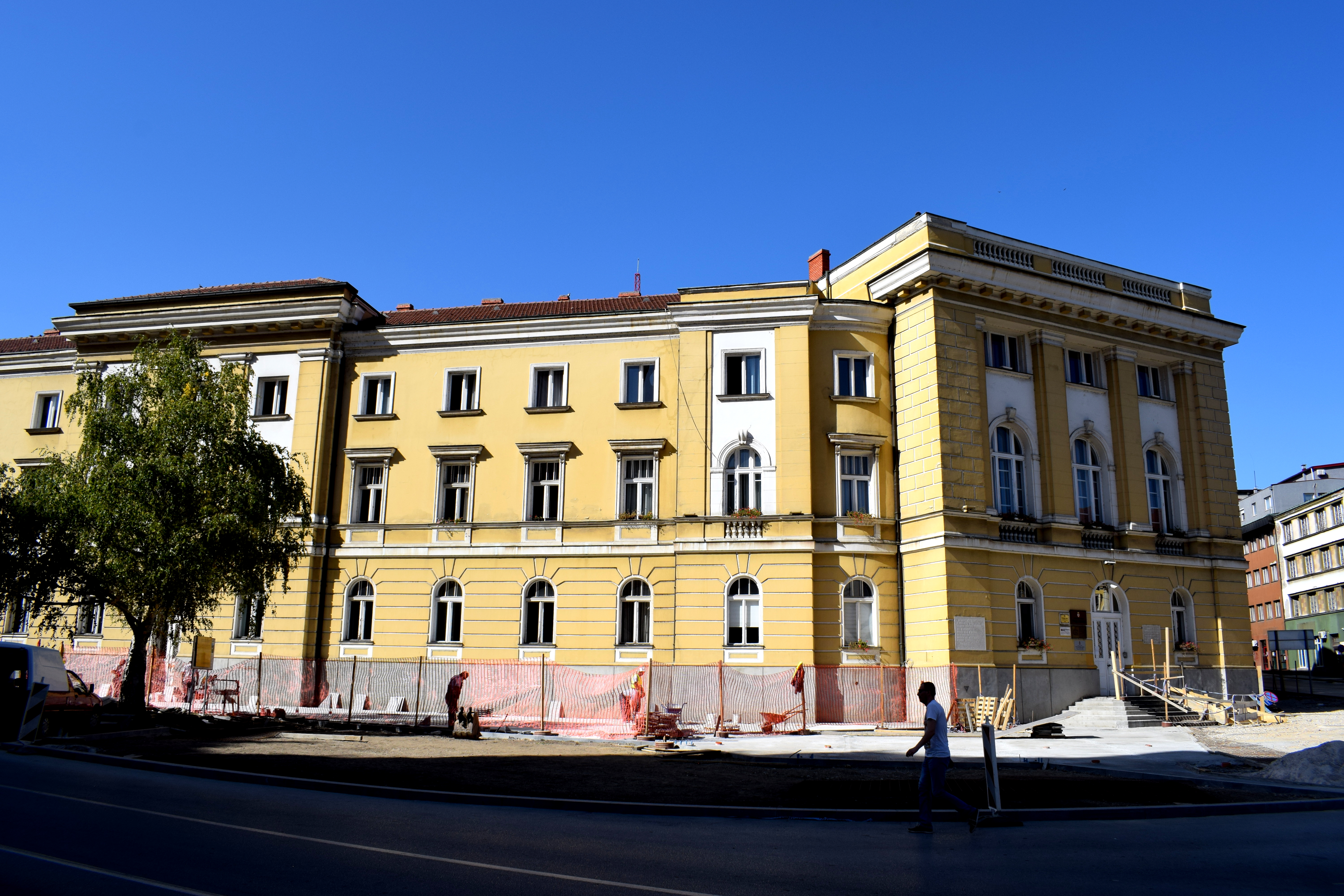 Partisan Square is an example of the city’s socialist architecture. Located in a beautiful section of town with a breathtaking view of the surrounding mountains, this area used to be the heart of Uzice with old 19th century buildings before WWII.
Partisan Square is an example of the city’s socialist architecture. Located in a beautiful section of town with a breathtaking view of the surrounding mountains, this area used to be the heart of Uzice with old 19th century buildings before WWII.
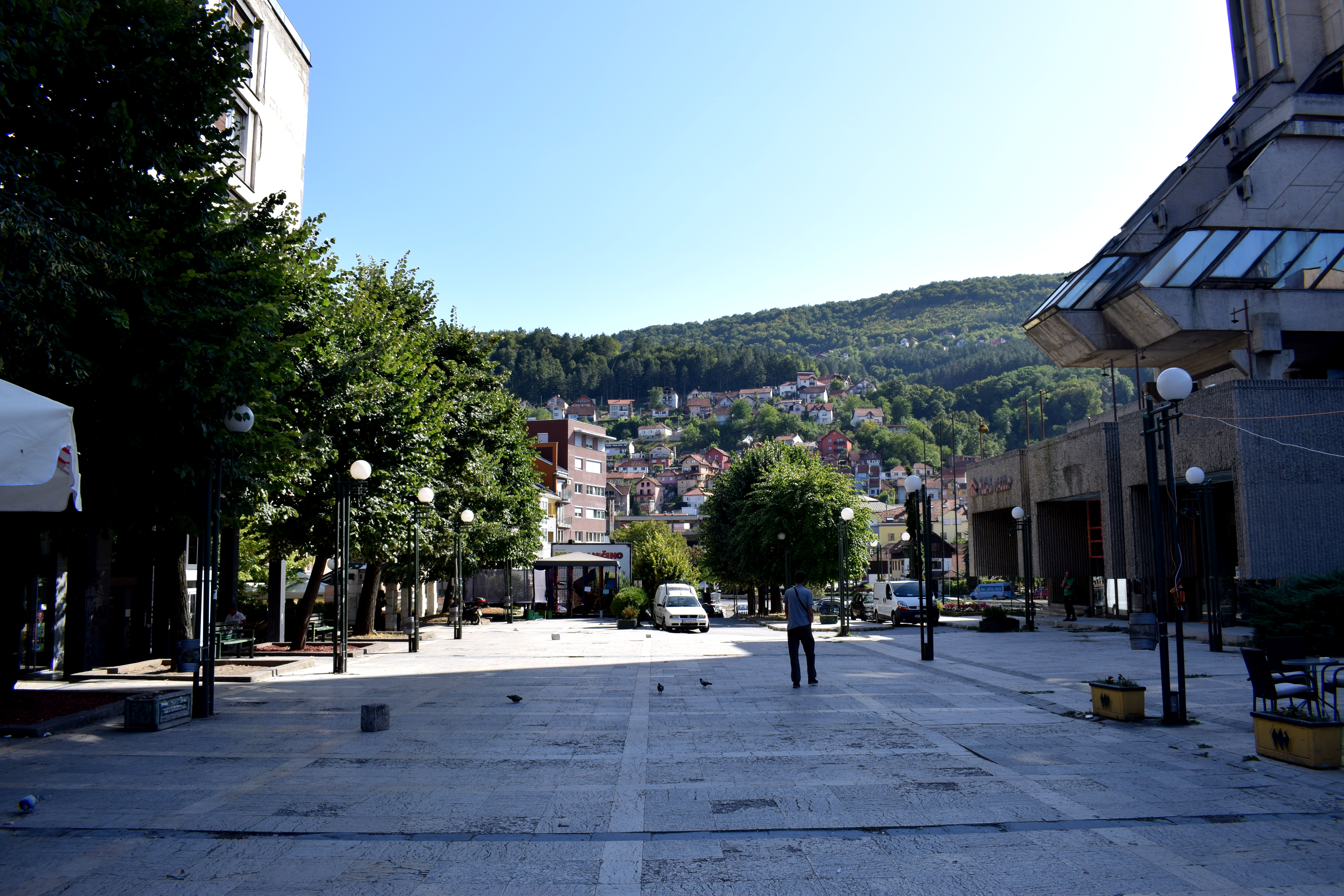 Partisan Square was praised as a shining example of Yugoslav socialist postwar reconstruction during Tito’s time. The square was built between 1959-1961 and designed by the famous Yugoslav architect Stanko Mandic who also designed the central city squares in Ljubljana and Velenje in Slovenia.
Partisan Square was praised as a shining example of Yugoslav socialist postwar reconstruction during Tito’s time. The square was built between 1959-1961 and designed by the famous Yugoslav architect Stanko Mandic who also designed the central city squares in Ljubljana and Velenje in Slovenia.
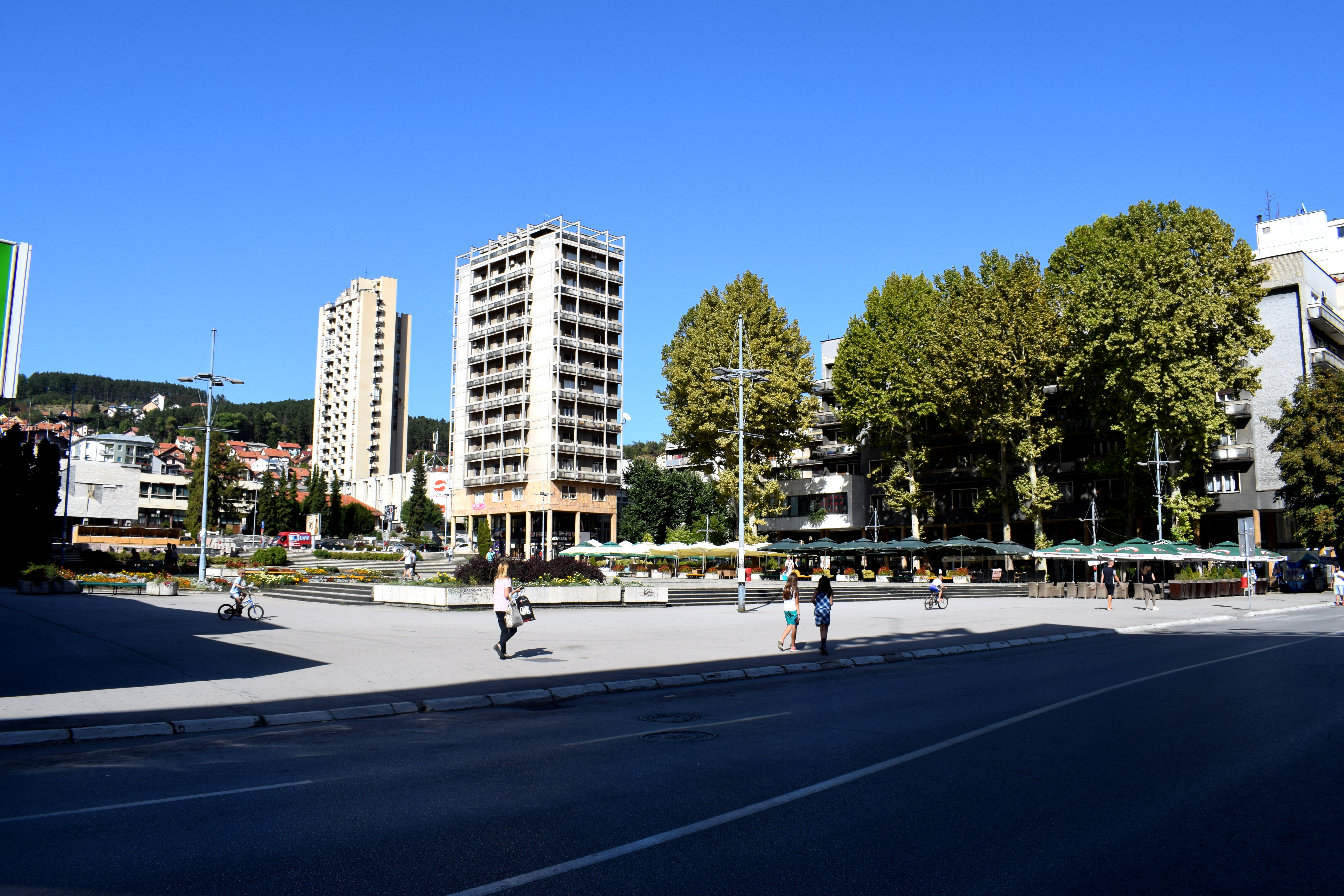 Uzice’s tallest and most notorious building, Hotel Zlatibor, is located on Partisan Square. When it was finally built and opened for guests during the 1980’s it was the pride and honor of Uzice.
Uzice’s tallest and most notorious building, Hotel Zlatibor, is located on Partisan Square. When it was finally built and opened for guests during the 1980’s it was the pride and honor of Uzice.
The life of the town revolved around the hotel. Yugoslavs would stay at the hotel in the summer to go hiking and in the winter to go skiing. It hosted youth camps, sporting events, school excursions to WWII monuments glorifying the partisan victory over fascists in WWII. The eighties were a glorious time for Yugoslavia.
But then the nineties came, Yugoslavia drifted into civil war and the hotel industry collapsed. Hotel Zlatibor fell into disrepair and there have been few changes made since then. Locals today refer to it as ‘sivonja’, meaning ‘the grey one’ and complain of its grey concrete facade and how it ruins the view of the surrounding mountains.
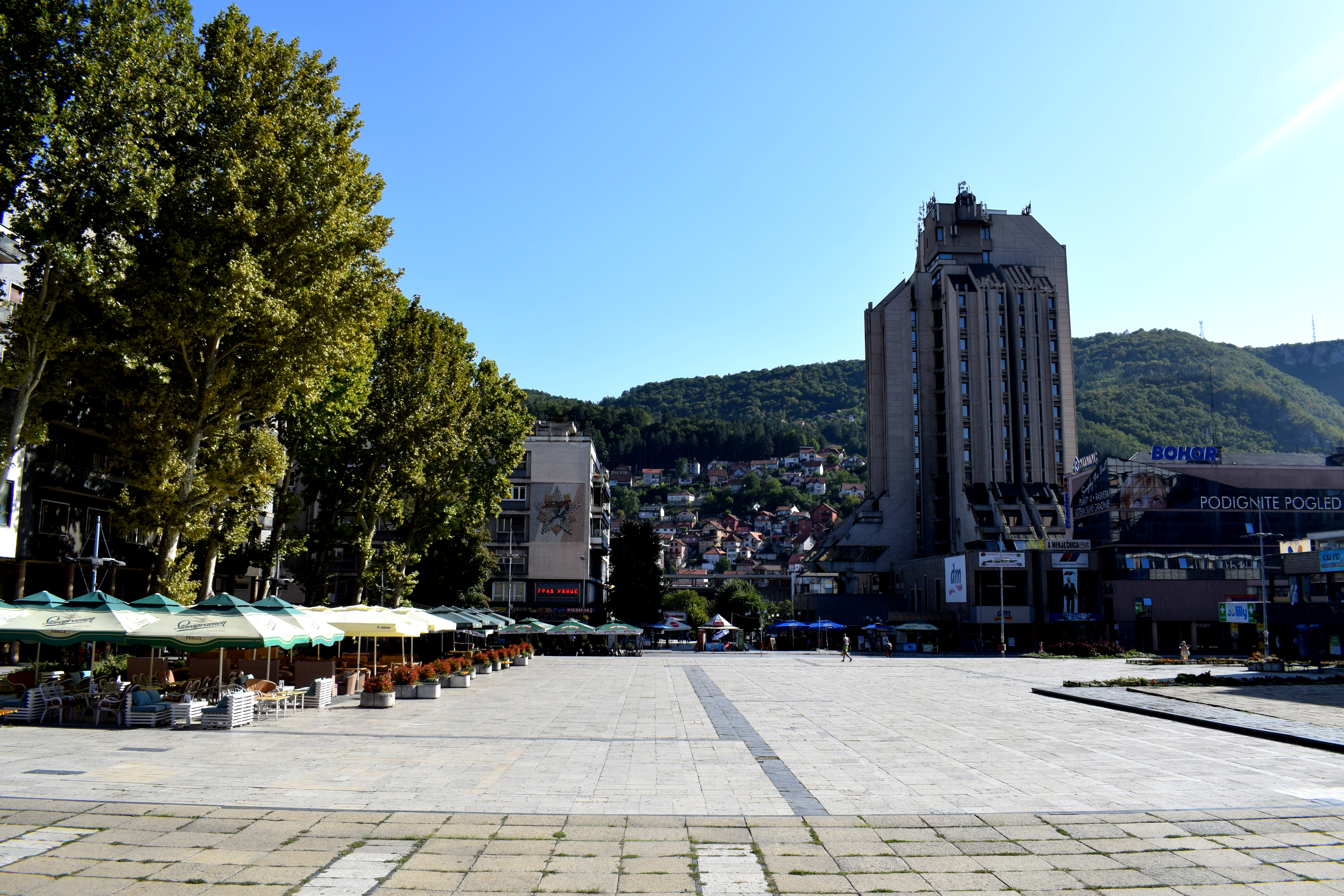 Cafes on Partisan Square.
Cafes on Partisan Square.
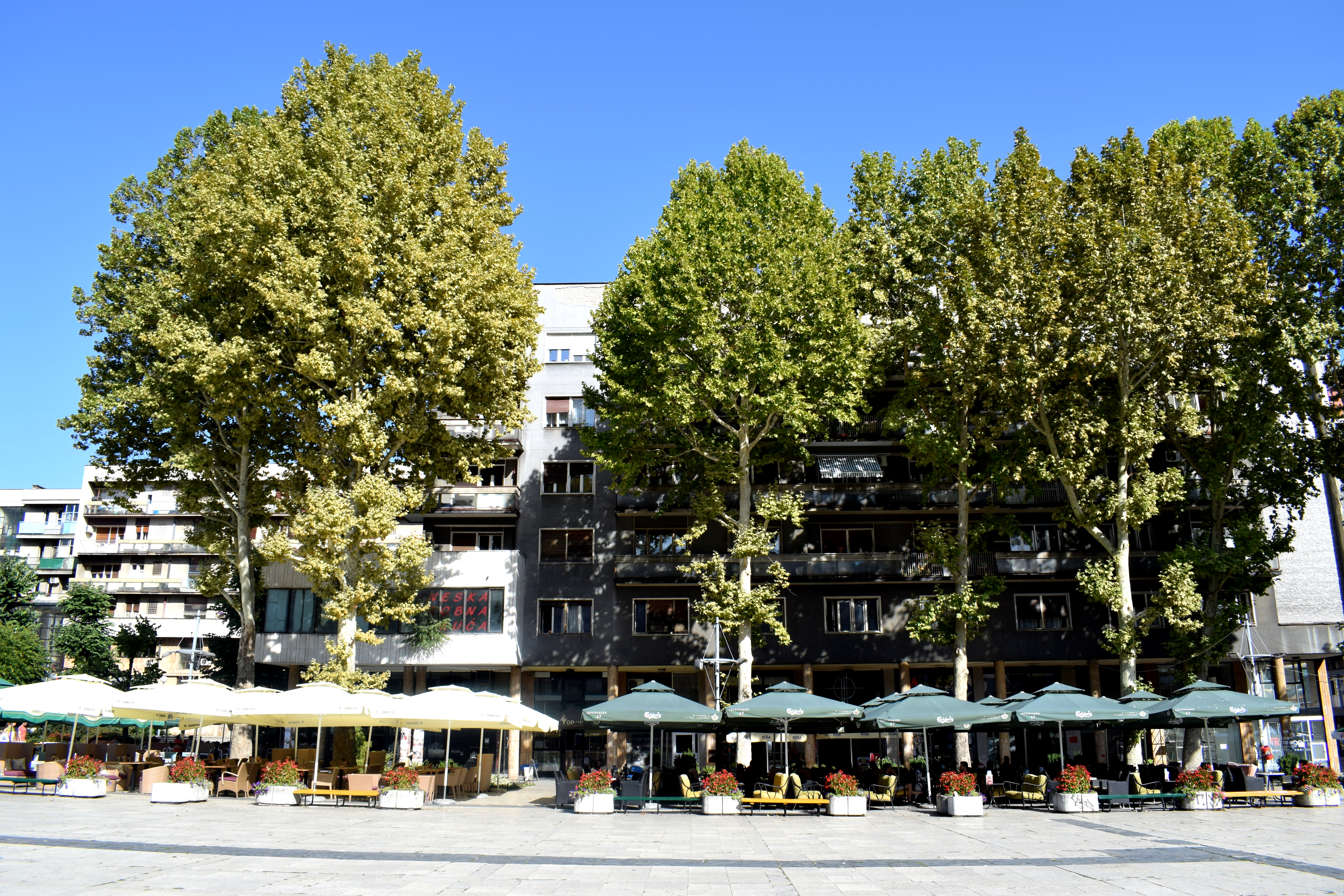 Next to Partisan Square is Dimitri Tucovic Street, the best surviving testament of how Uzice looked before WWII.
Next to Partisan Square is Dimitri Tucovic Street, the best surviving testament of how Uzice looked before WWII.
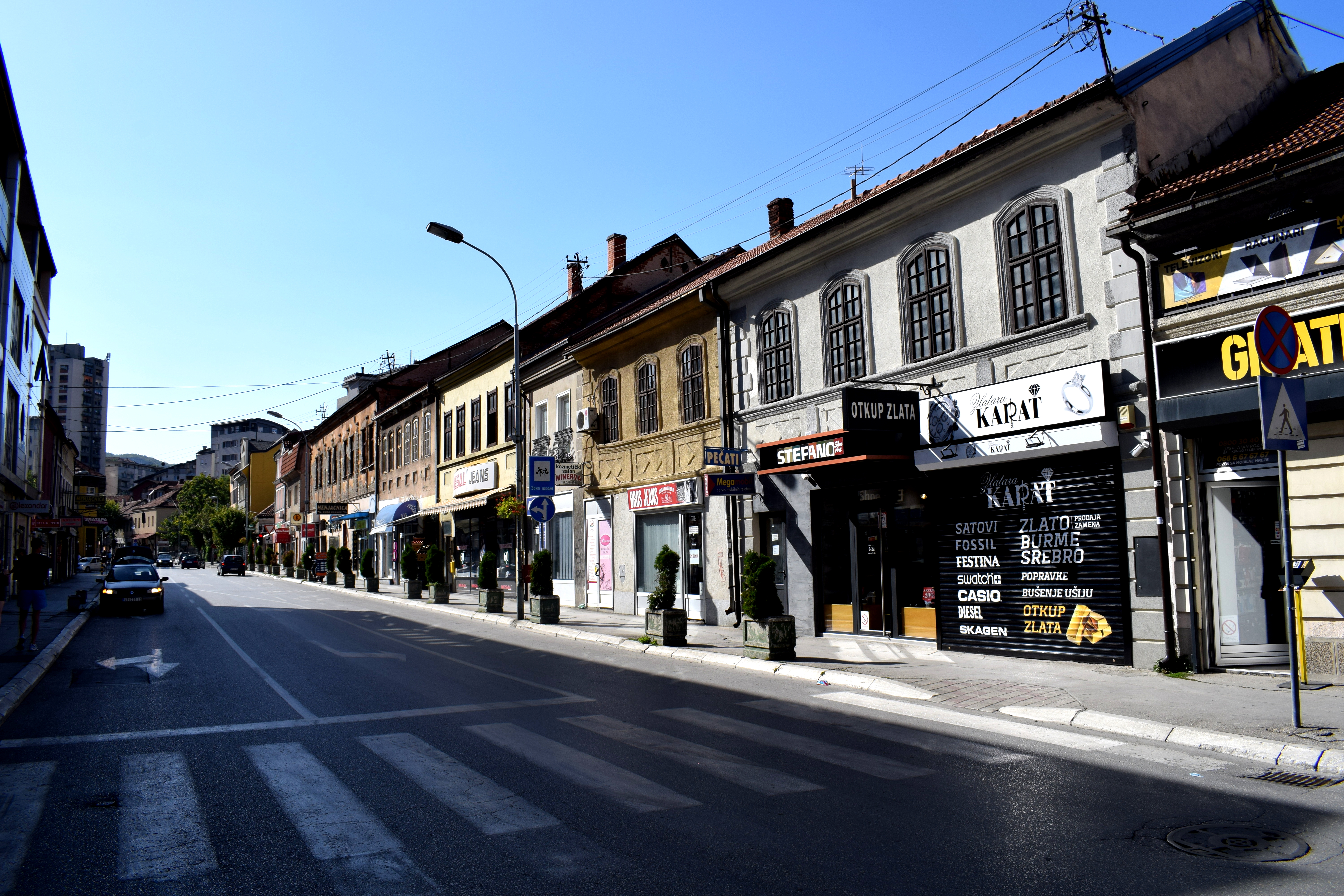 Uzice has a lot of potential to turn this into pedestrian street. A major drawback of Uzice today is that it does not have a central pedestrian street like other cities in the Balkans and Europe. Dimitri Tucovic Street would be a perfect candidate for such a street.
Uzice has a lot of potential to turn this into pedestrian street. A major drawback of Uzice today is that it does not have a central pedestrian street like other cities in the Balkans and Europe. Dimitri Tucovic Street would be a perfect candidate for such a street.
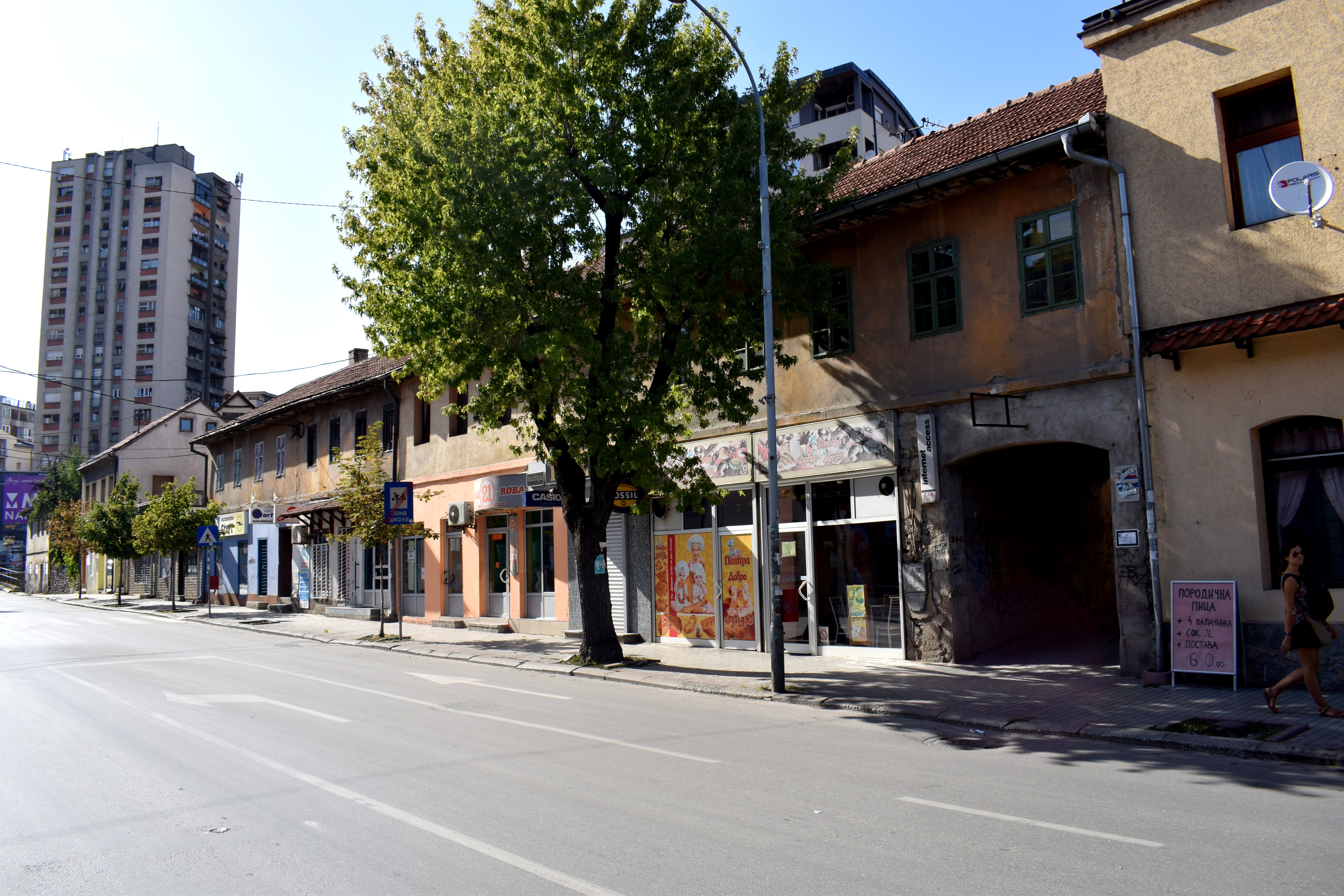 Some of the buildings on Dimitri Tucovic Street are in need of renovation. But the city has recognized this problem and announced plans to renovate all the historical facades of buildings in the city center.
Some of the buildings on Dimitri Tucovic Street are in need of renovation. But the city has recognized this problem and announced plans to renovate all the historical facades of buildings in the city center.
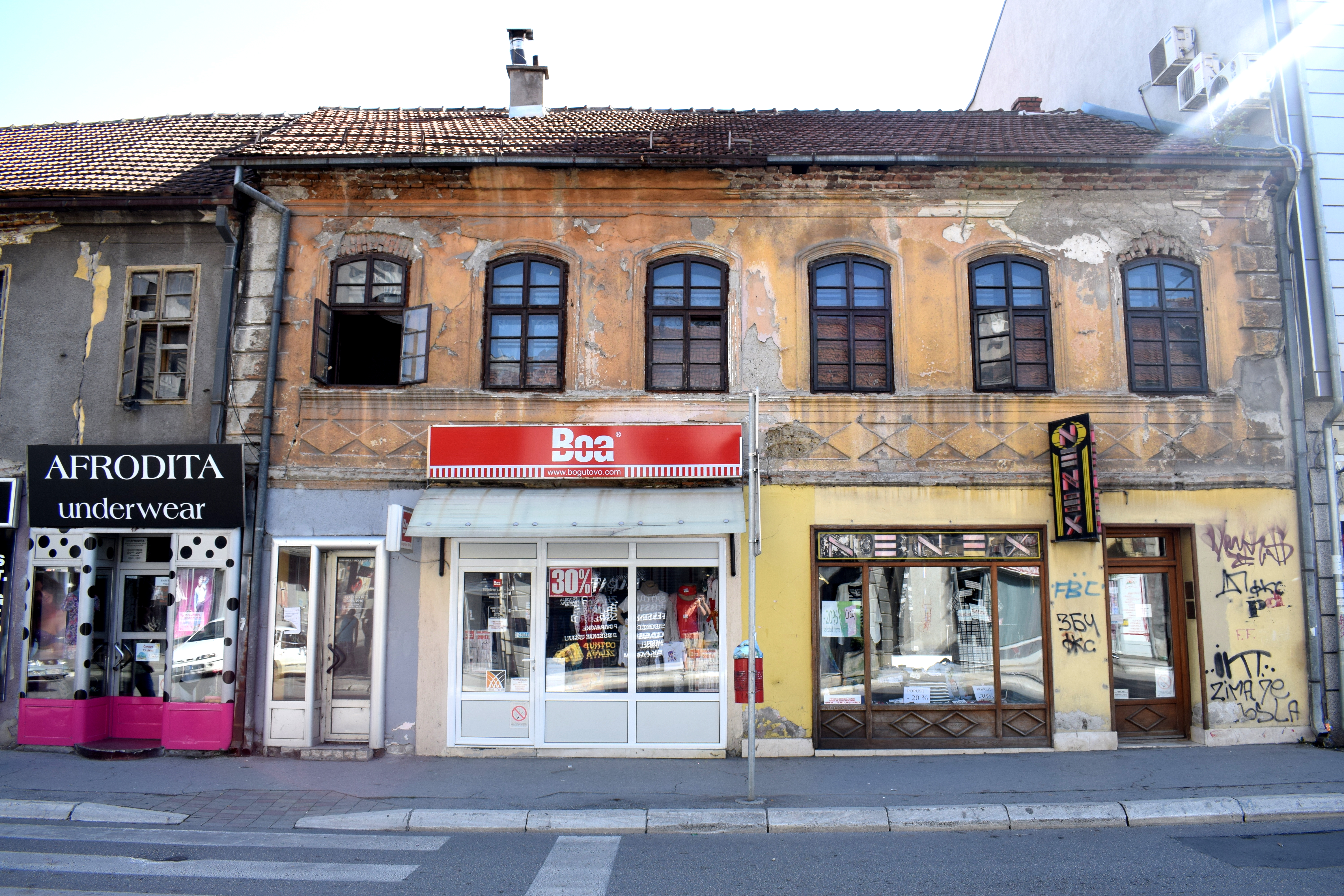 An example of a recently renovated section.
An example of a recently renovated section.
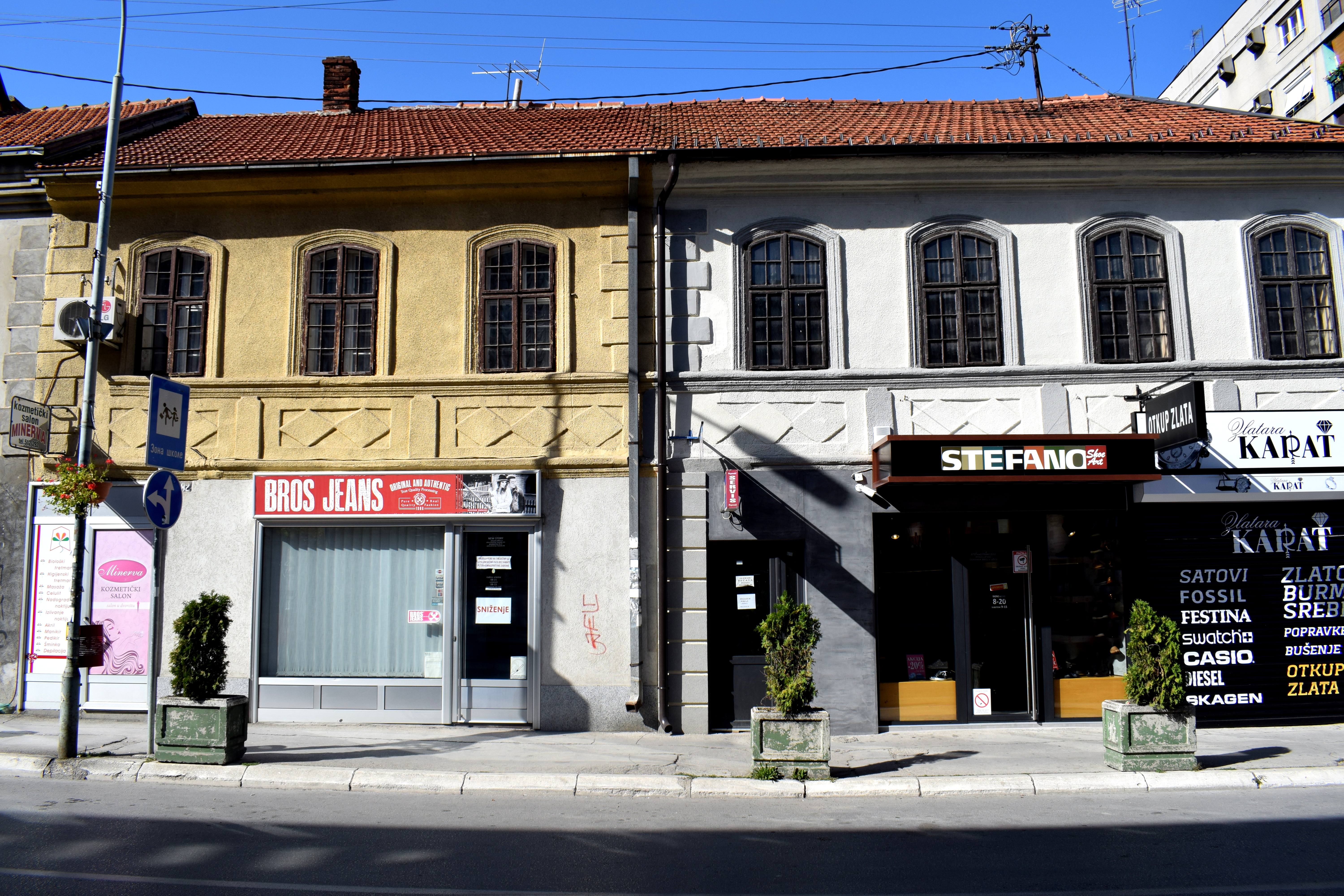 Dimitri Tucovic Street could be transformed into a smaller version of Knez Mihailova Street in Belgrade, filled with cafes, book shops, restaurants and museums. It would go a long way into make the city more attractive.
Dimitri Tucovic Street could be transformed into a smaller version of Knez Mihailova Street in Belgrade, filled with cafes, book shops, restaurants and museums. It would go a long way into make the city more attractive.
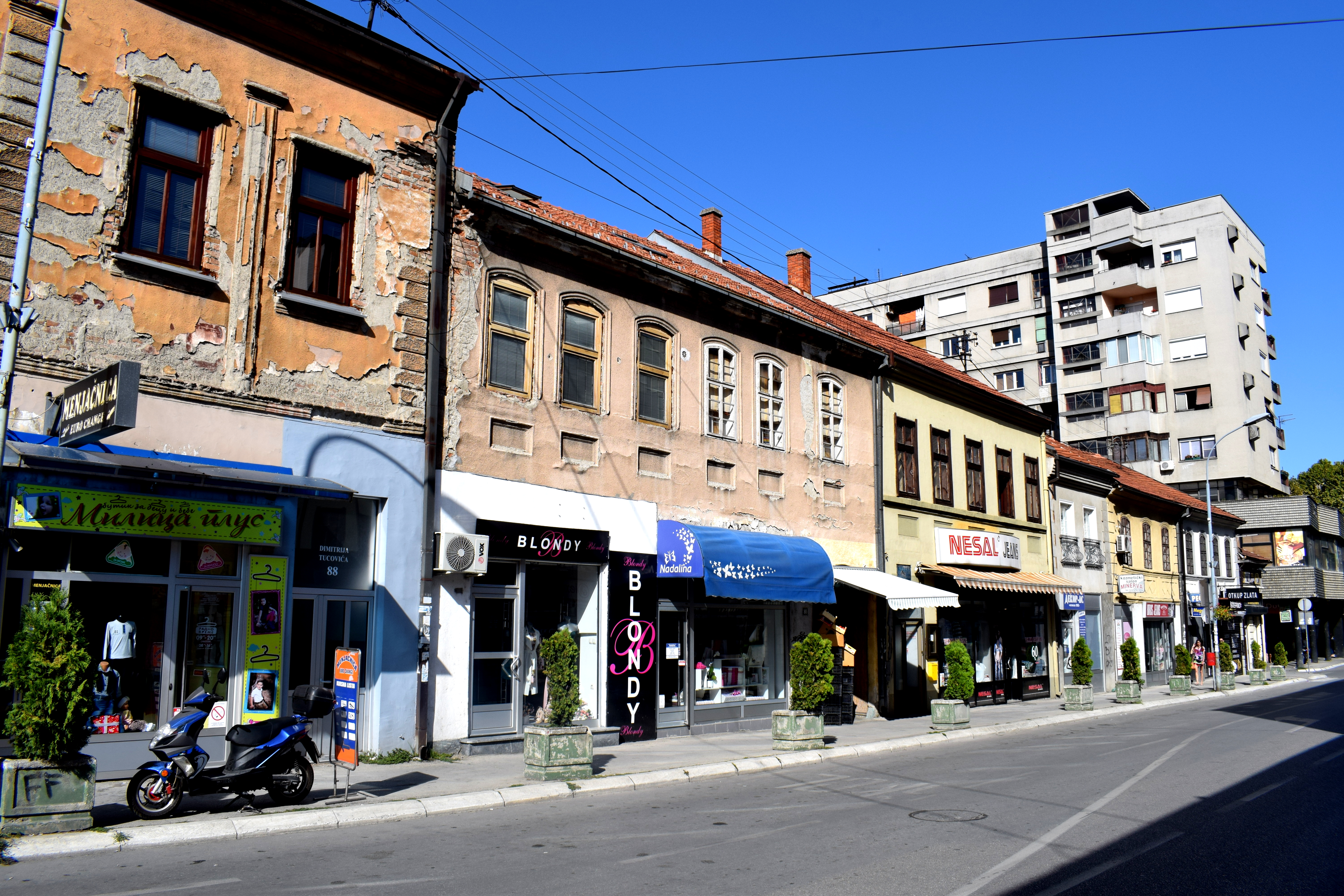 One of the oldest elementary schools in Serbia is located on the street. Shortly after Serbia gained independence from the Ottoman Empire in 1878, King Milan I Obrenovic ordered a school be founded in Uzice in 1883. Before the school was established, children in Uzice were largely educated at home by their parents and personal tutors.
One of the oldest elementary schools in Serbia is located on the street. Shortly after Serbia gained independence from the Ottoman Empire in 1878, King Milan I Obrenovic ordered a school be founded in Uzice in 1883. Before the school was established, children in Uzice were largely educated at home by their parents and personal tutors.
 Some more buildings on the street.
Some more buildings on the street.
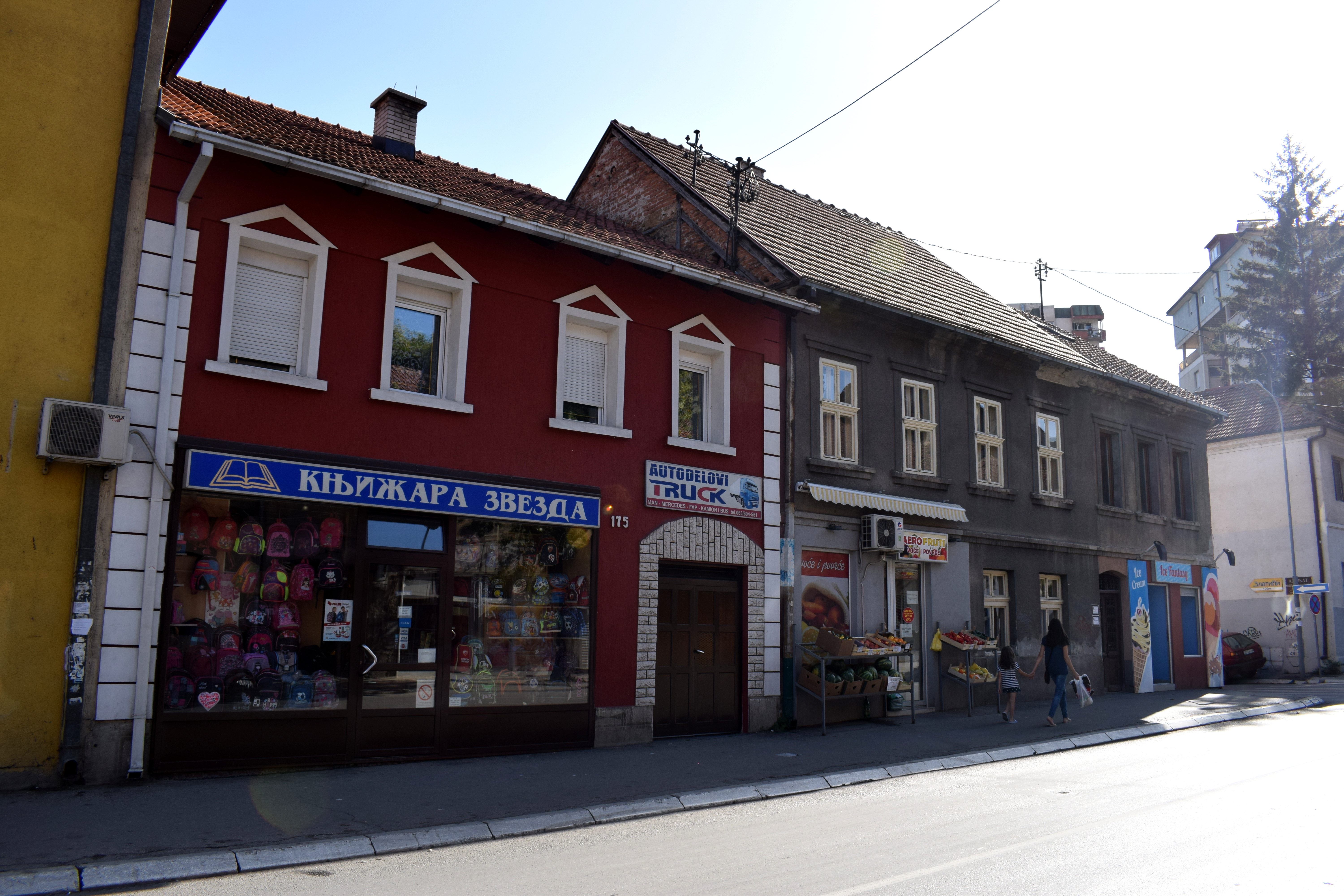 Private homes in the city center.
Private homes in the city center.
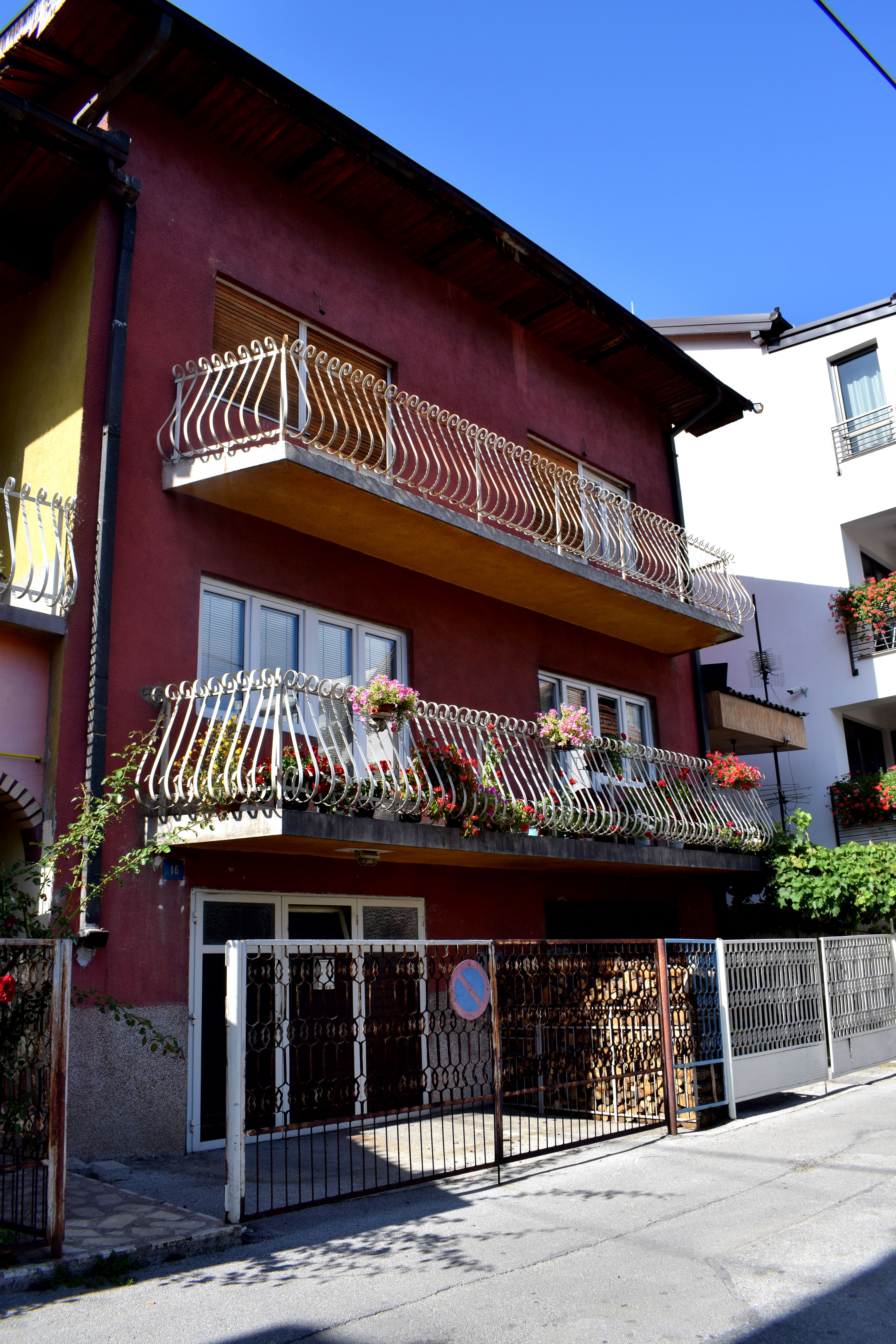 Apartments and homes in Uzice typically cost between 30,000 and 100,000 euros.
Apartments and homes in Uzice typically cost between 30,000 and 100,000 euros.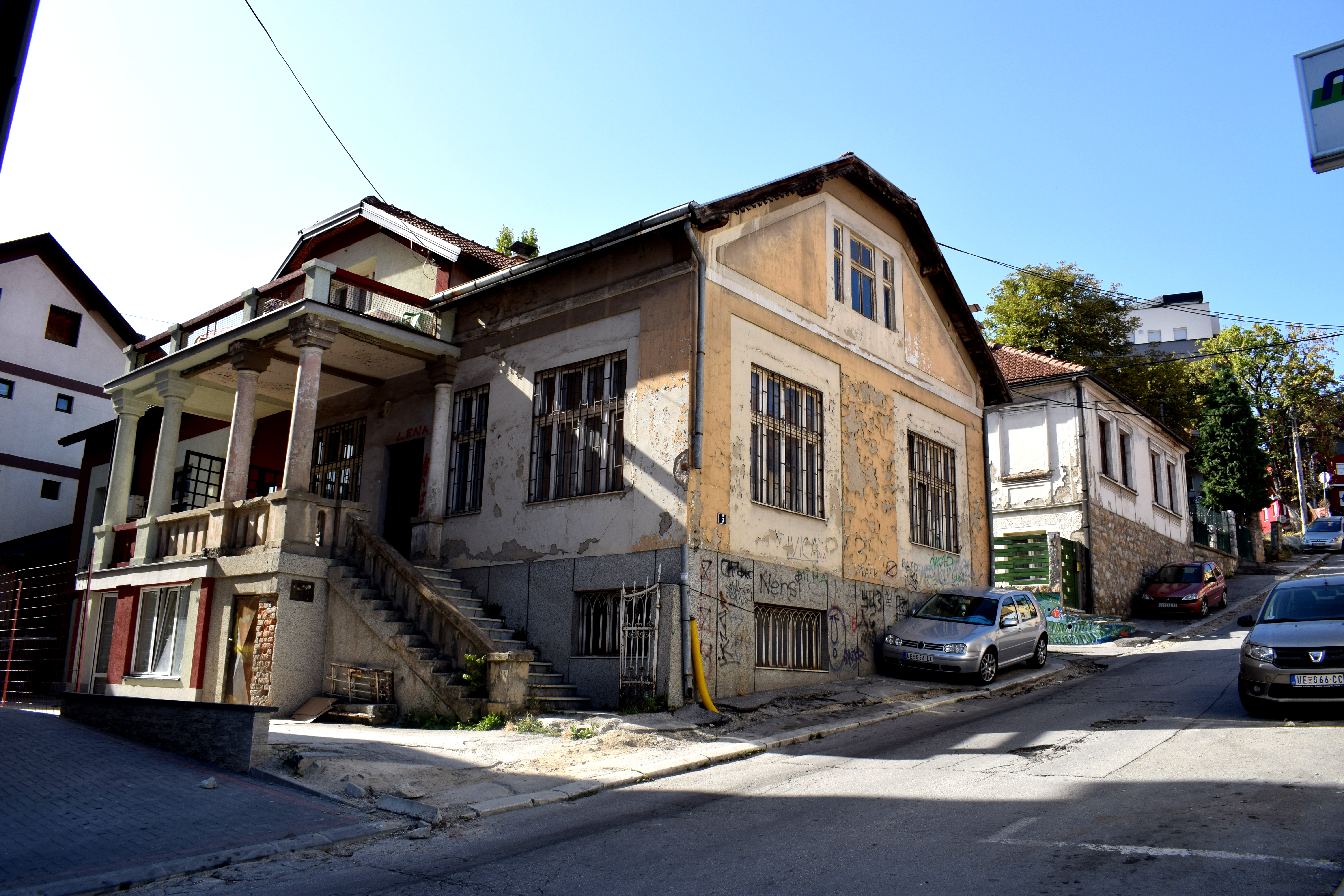 Buildings in Uzice often have the year they were built engraved on the outside. This building is 117 years old and has managed to survive two world wars to still stand today.
Buildings in Uzice often have the year they were built engraved on the outside. This building is 117 years old and has managed to survive two world wars to still stand today.
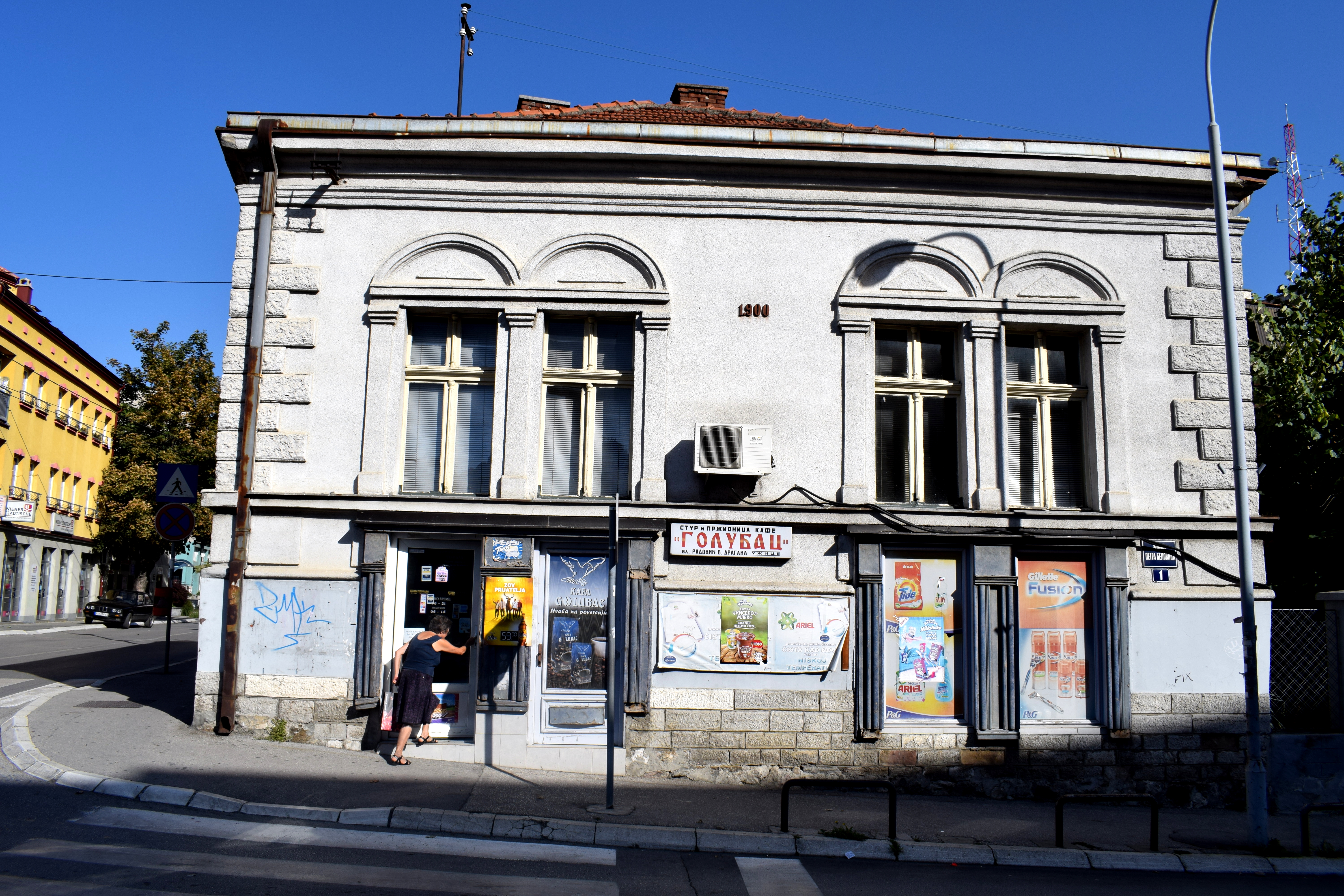 Now to the food. Uzice is famous for a meal that is unique to the city alone: Komplet Lepinja. Rarely found in other areas of the Balkans, it consists of freshly baked white bread stuffed with eggs, butter and kajmak, a form of dairy that tastes like a mix between sour cream and cottage cheese. It’s then all baked together fresh in an oven. The result is a week’s worth of fat in one meal.
Now to the food. Uzice is famous for a meal that is unique to the city alone: Komplet Lepinja. Rarely found in other areas of the Balkans, it consists of freshly baked white bread stuffed with eggs, butter and kajmak, a form of dairy that tastes like a mix between sour cream and cottage cheese. It’s then all baked together fresh in an oven. The result is a week’s worth of fat in one meal.
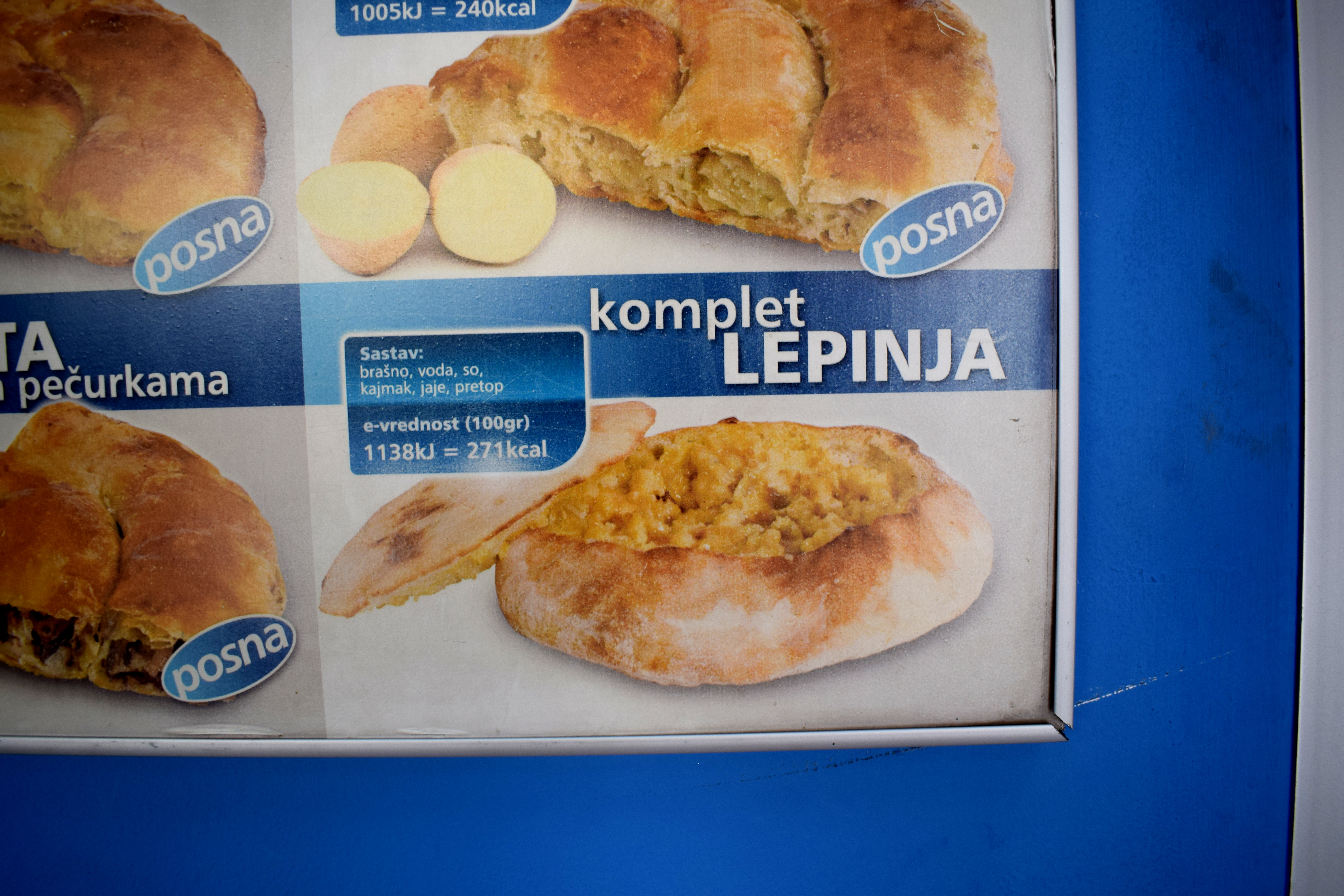 Don’t expect to eat this for lunch and have a productive afternoon in the office.
Don’t expect to eat this for lunch and have a productive afternoon in the office.
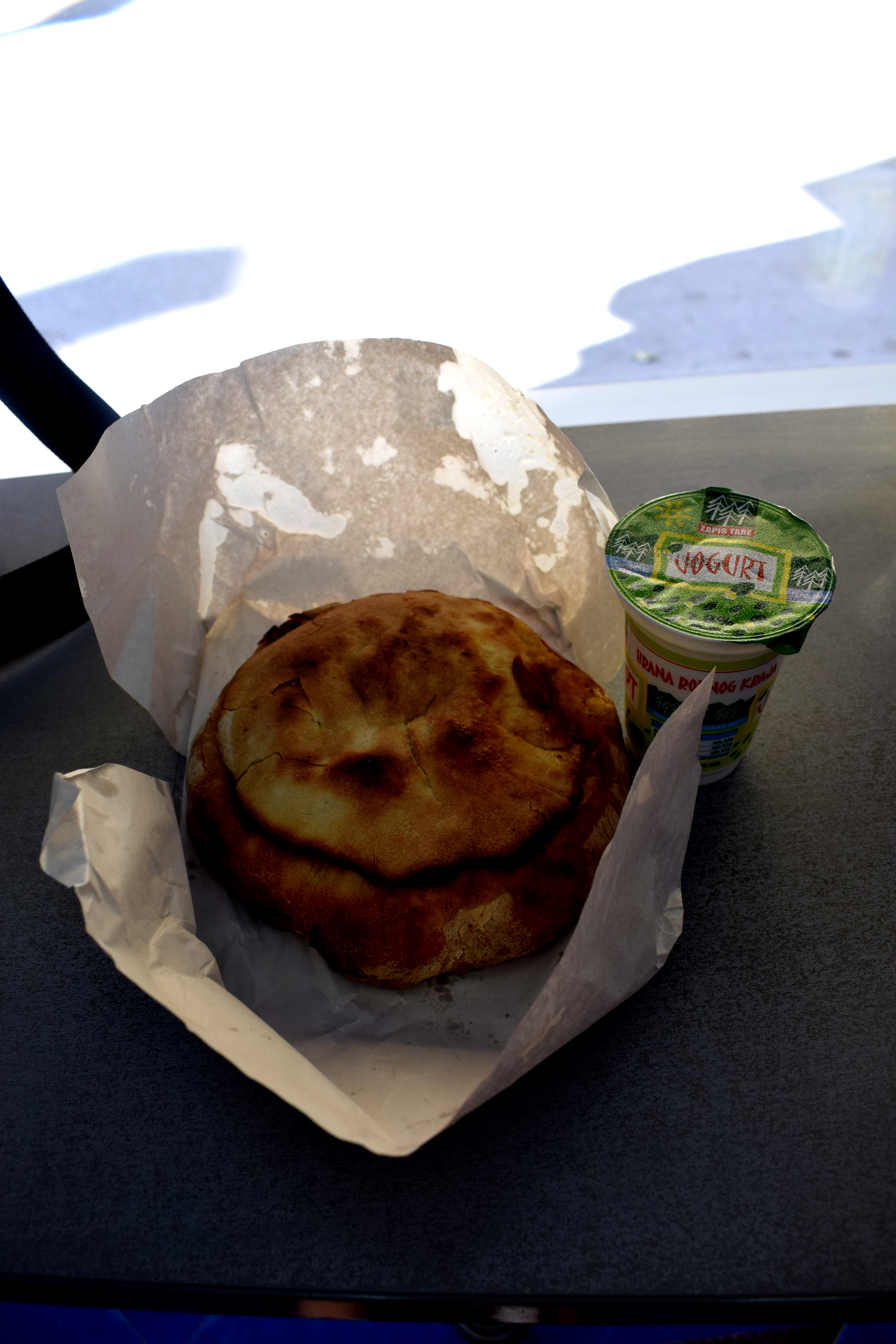 If you prefer not to clog your arteries, there are plenty of fruits and vegetables on sale around the city for very reasonable prices.
If you prefer not to clog your arteries, there are plenty of fruits and vegetables on sale around the city for very reasonable prices.
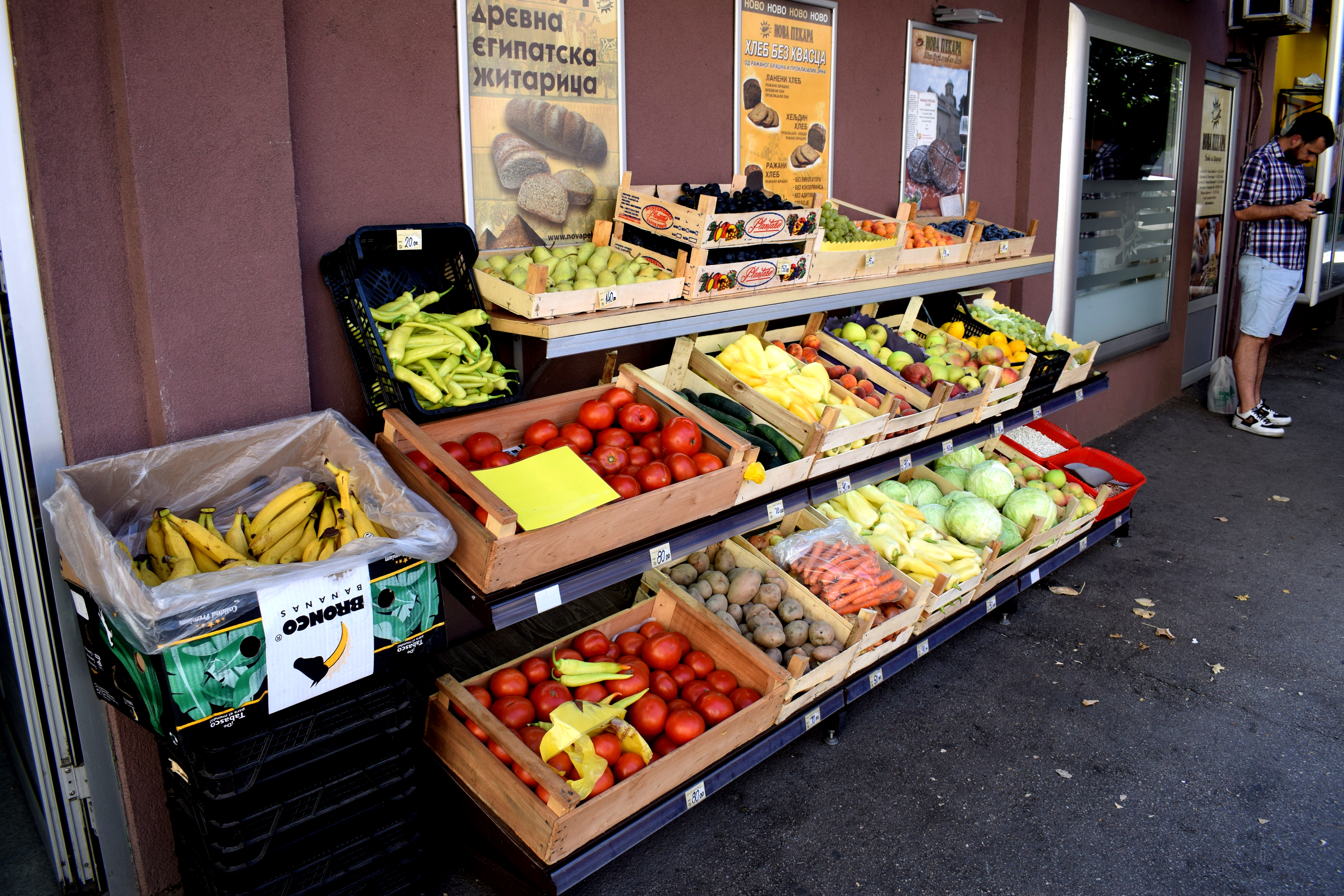 One of my favorite things about Uzice are the small one or two story homes with red tiled roofs contrasted with green mountains in the background.
One of my favorite things about Uzice are the small one or two story homes with red tiled roofs contrasted with green mountains in the background.
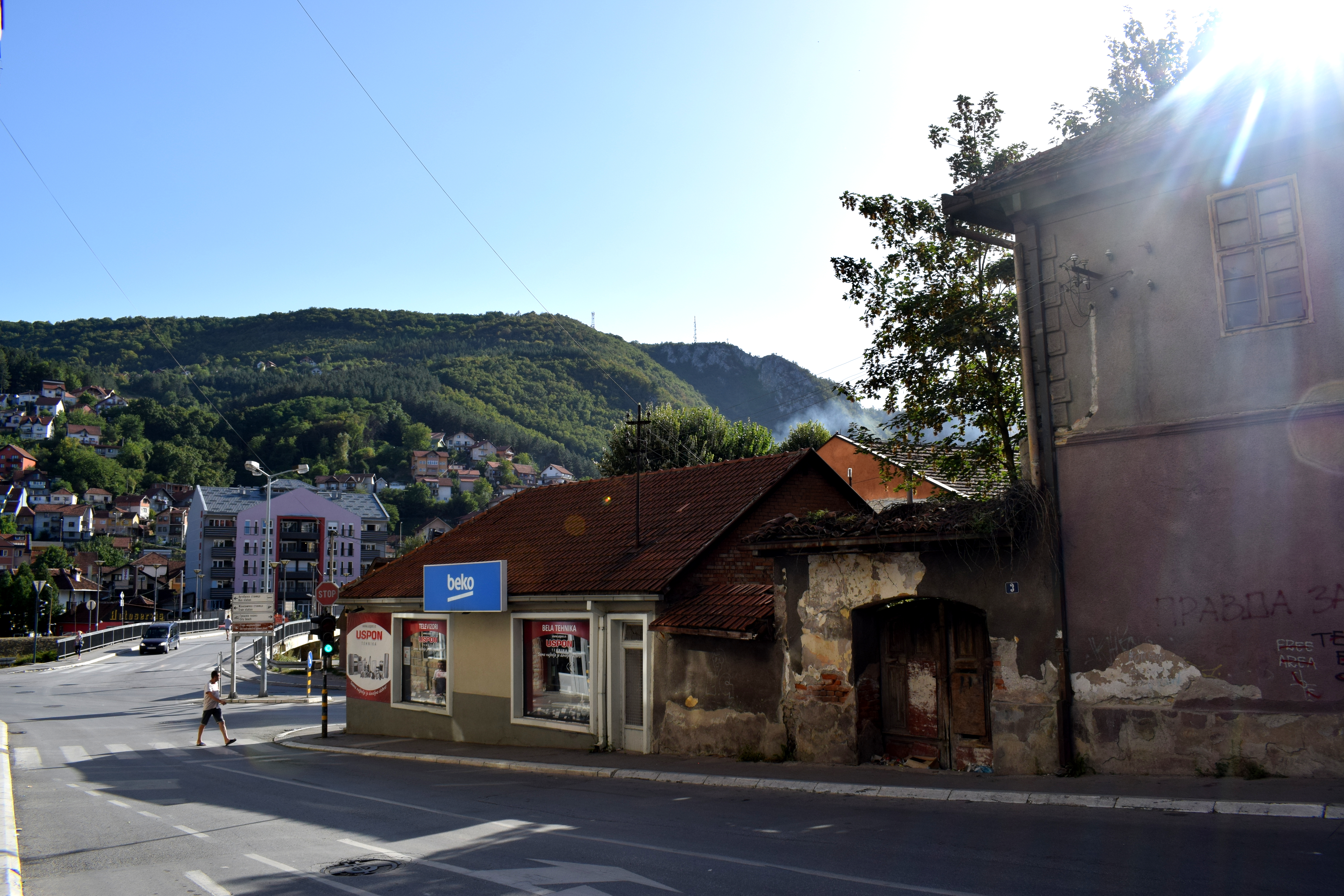 Lots of Serbs own country houses in the surrounding mountains and on the weekends to get away from cities to enjoy the countryside.
Lots of Serbs own country houses in the surrounding mountains and on the weekends to get away from cities to enjoy the countryside.
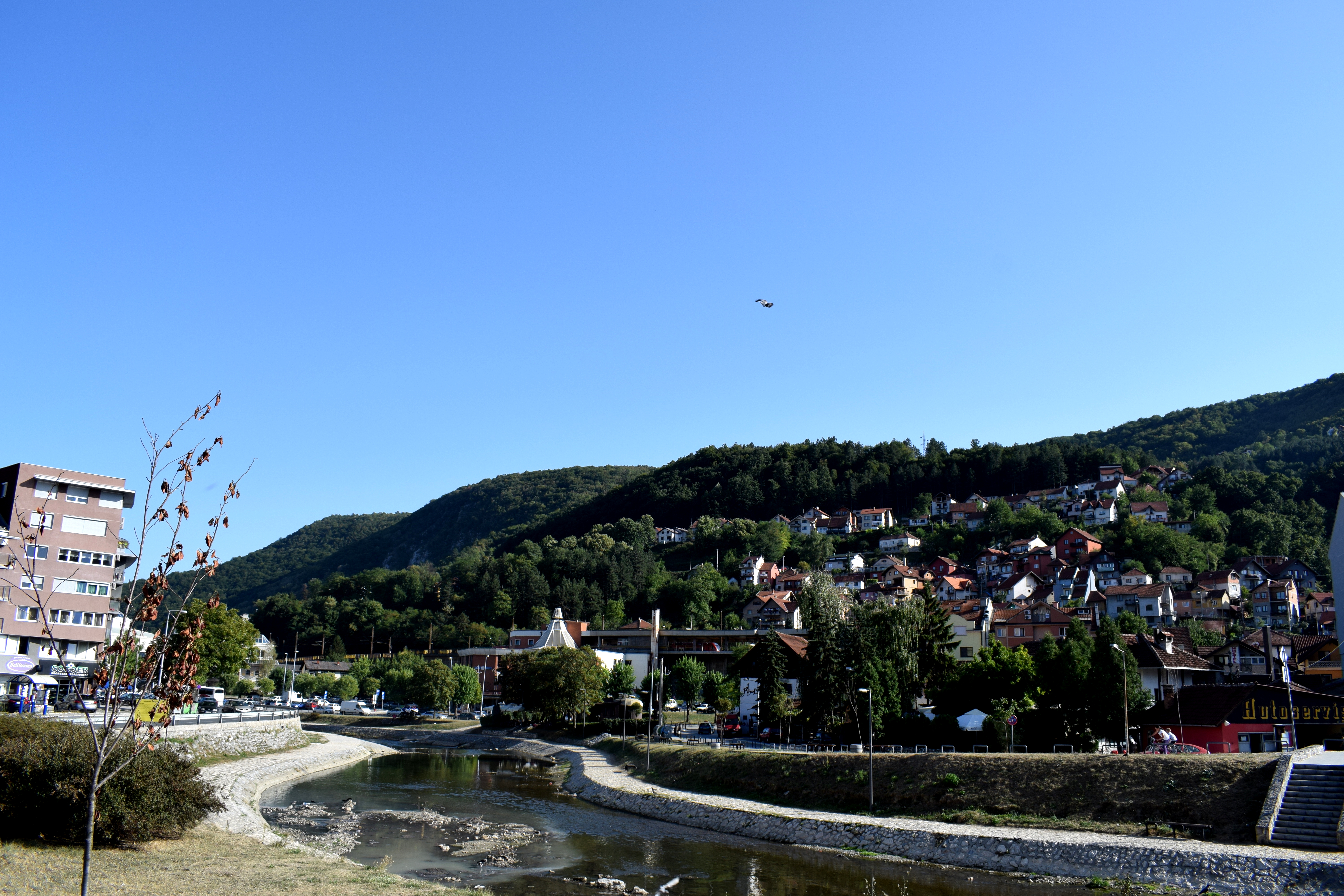 Some local street art.
Some local street art.
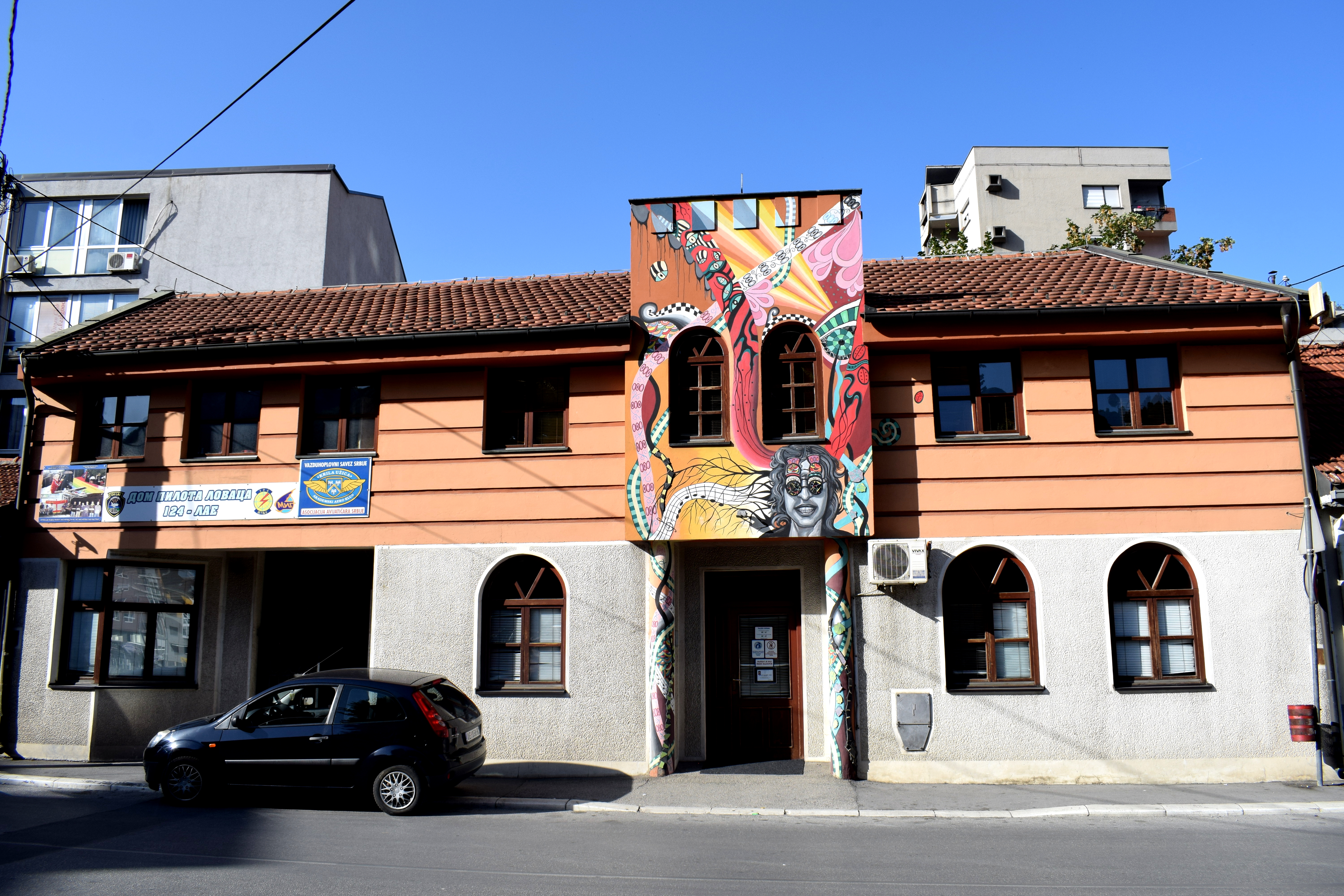
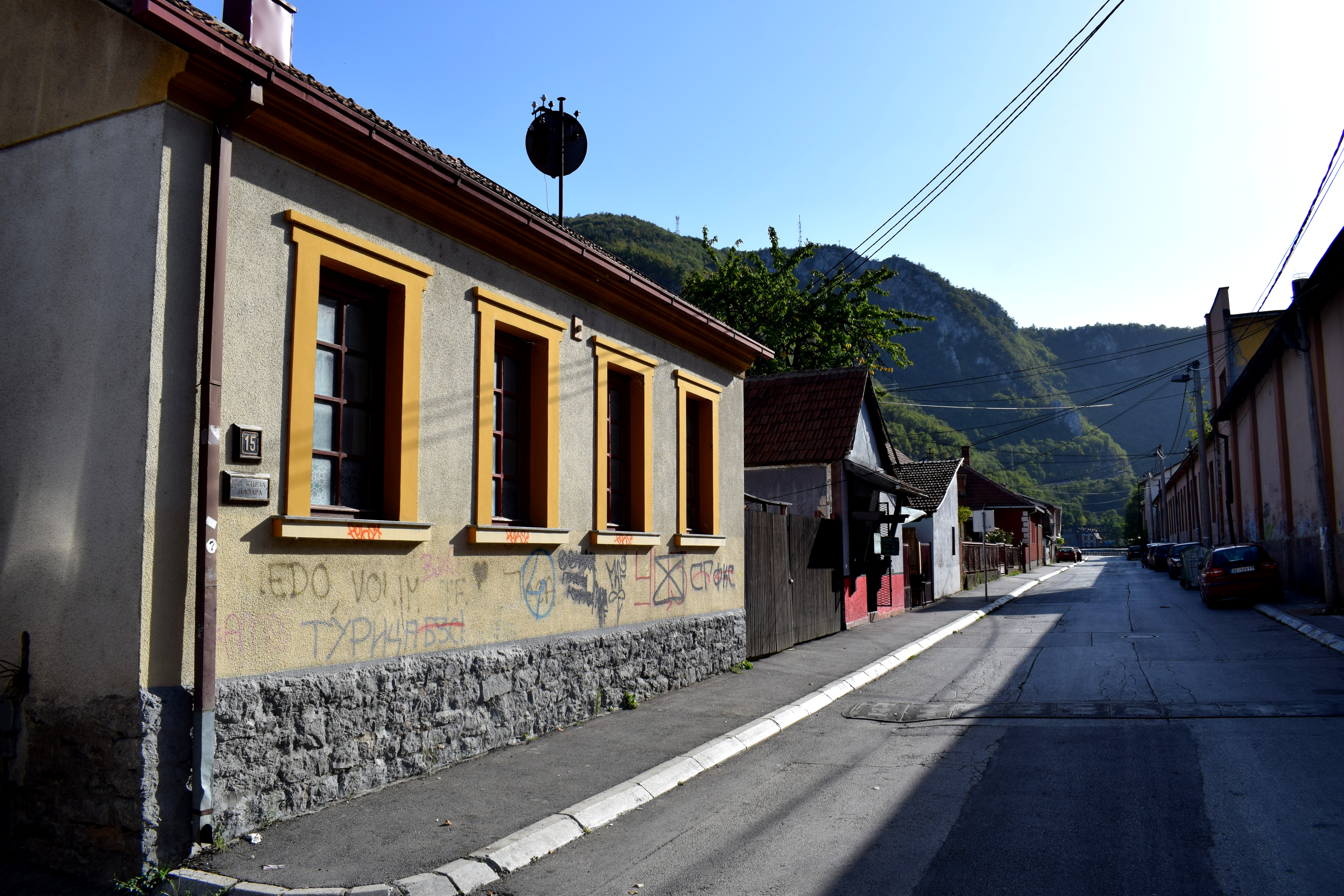 Uzice was the first city in the Balkans and one of the first cities in Europe to build a hydroelectric dam. The Uzice Hydroelectric Dam was built in 1900 based on designs by the famous Serbian inventor Nikola Tesla.
Uzice was the first city in the Balkans and one of the first cities in Europe to build a hydroelectric dam. The Uzice Hydroelectric Dam was built in 1900 based on designs by the famous Serbian inventor Nikola Tesla.
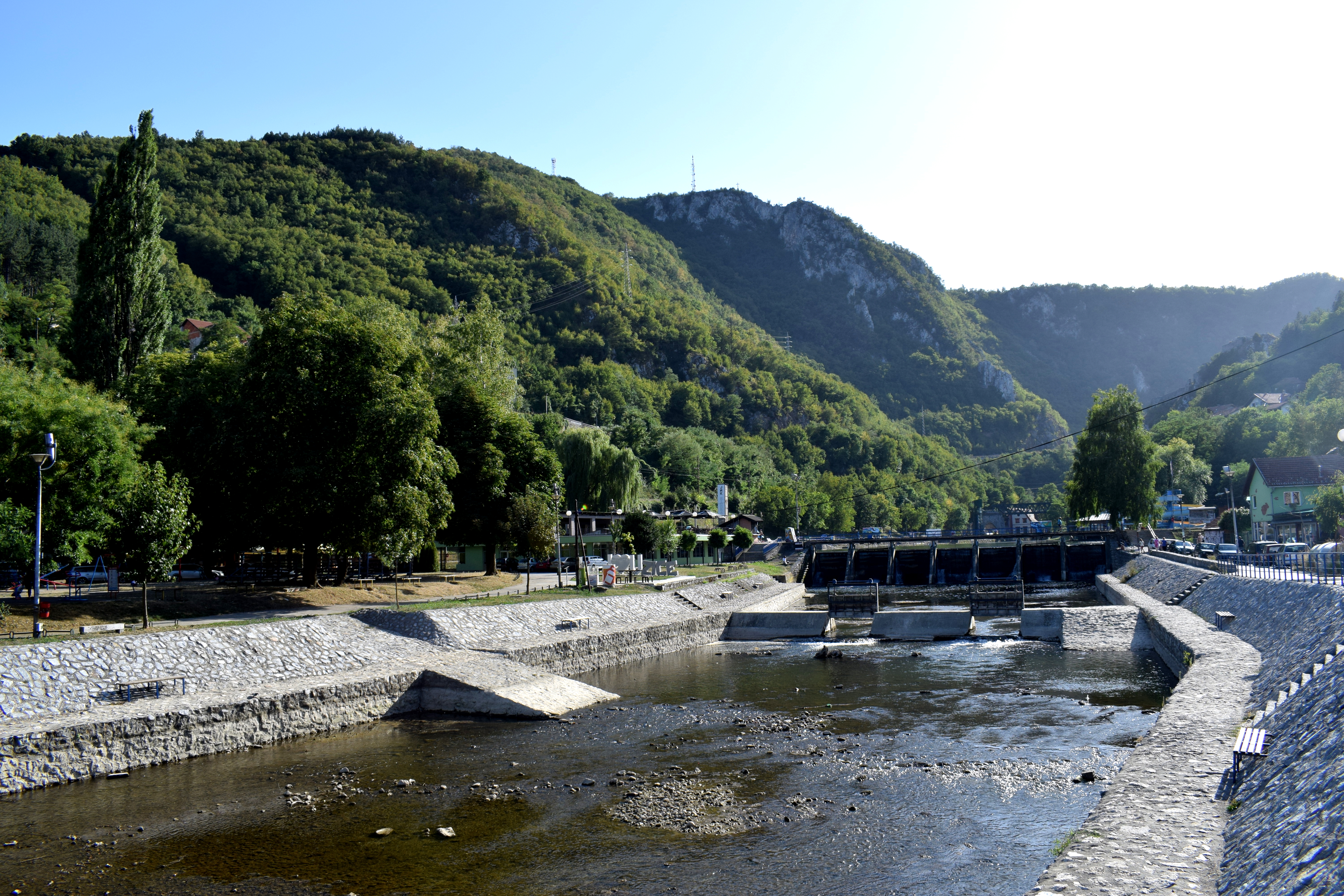 Today a lot of outdoor and sports activities take place around the dam. There are parks for kids to play in, basketball courts, tennis courts, a swimming pool, cycling lanes, even an urban beach for swimming.
Today a lot of outdoor and sports activities take place around the dam. There are parks for kids to play in, basketball courts, tennis courts, a swimming pool, cycling lanes, even an urban beach for swimming.
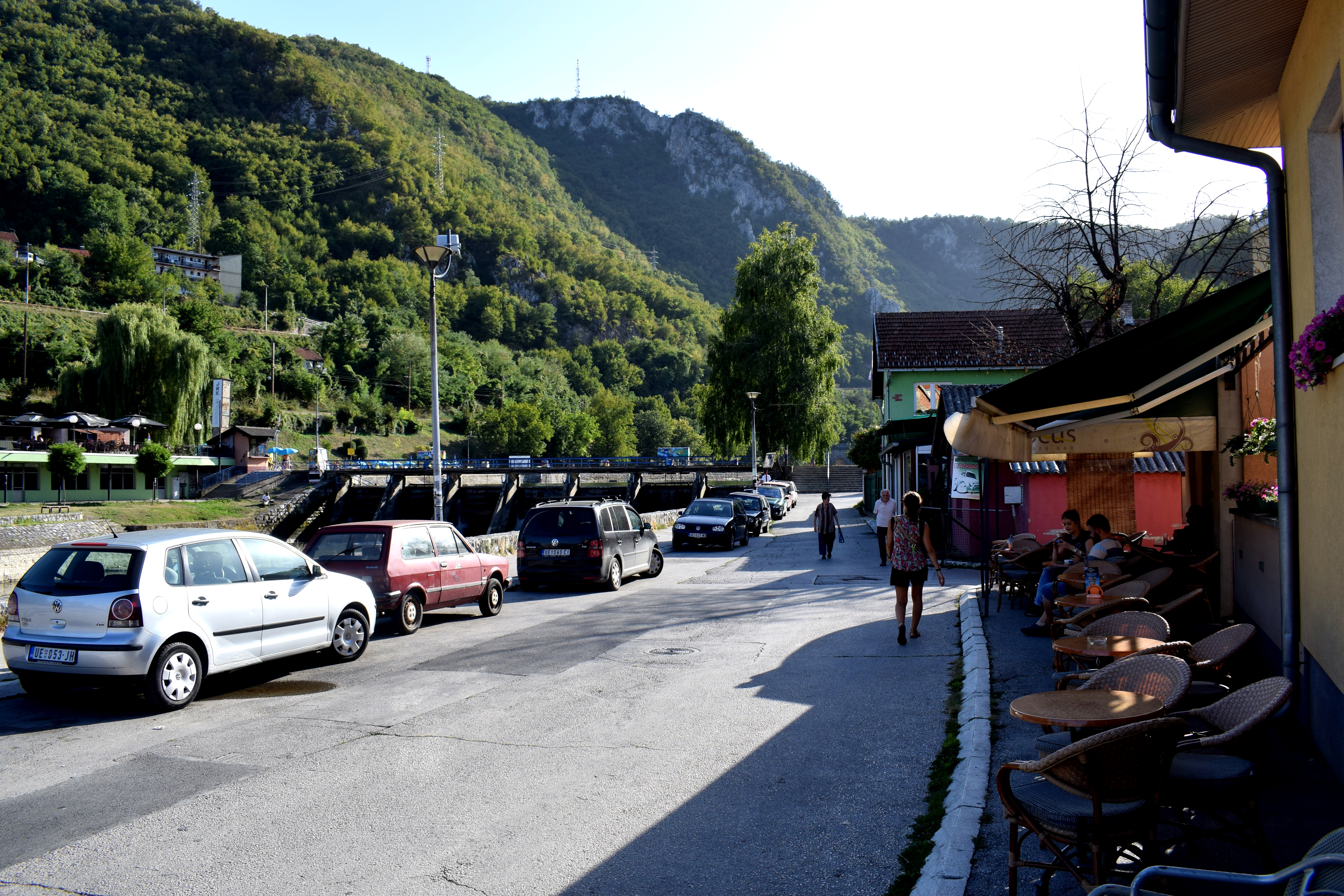 Not a lot of people were swimming in the water, but lots of people were out enjoying the sun.
Not a lot of people were swimming in the water, but lots of people were out enjoying the sun.
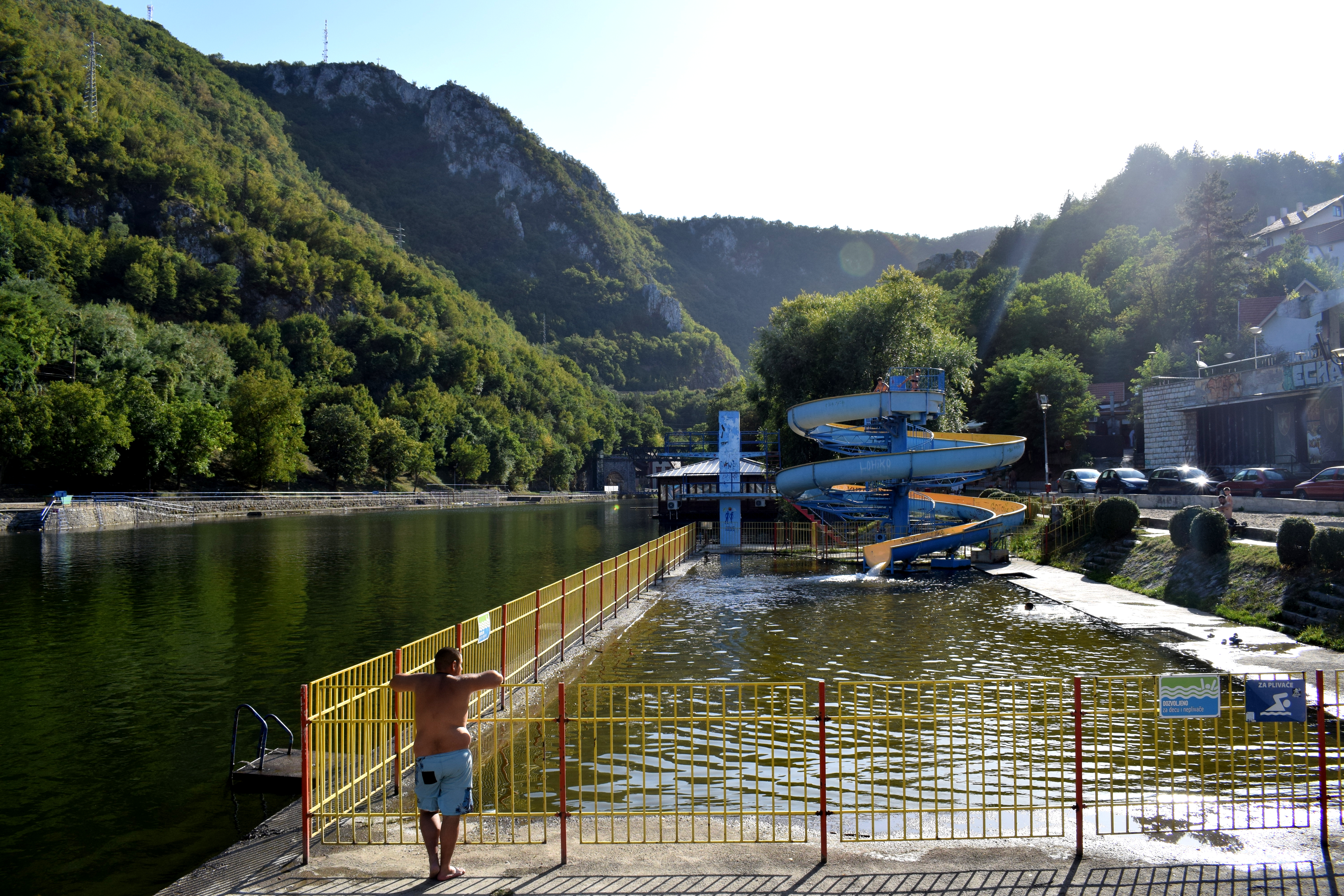 Playing sports.
Playing sports.
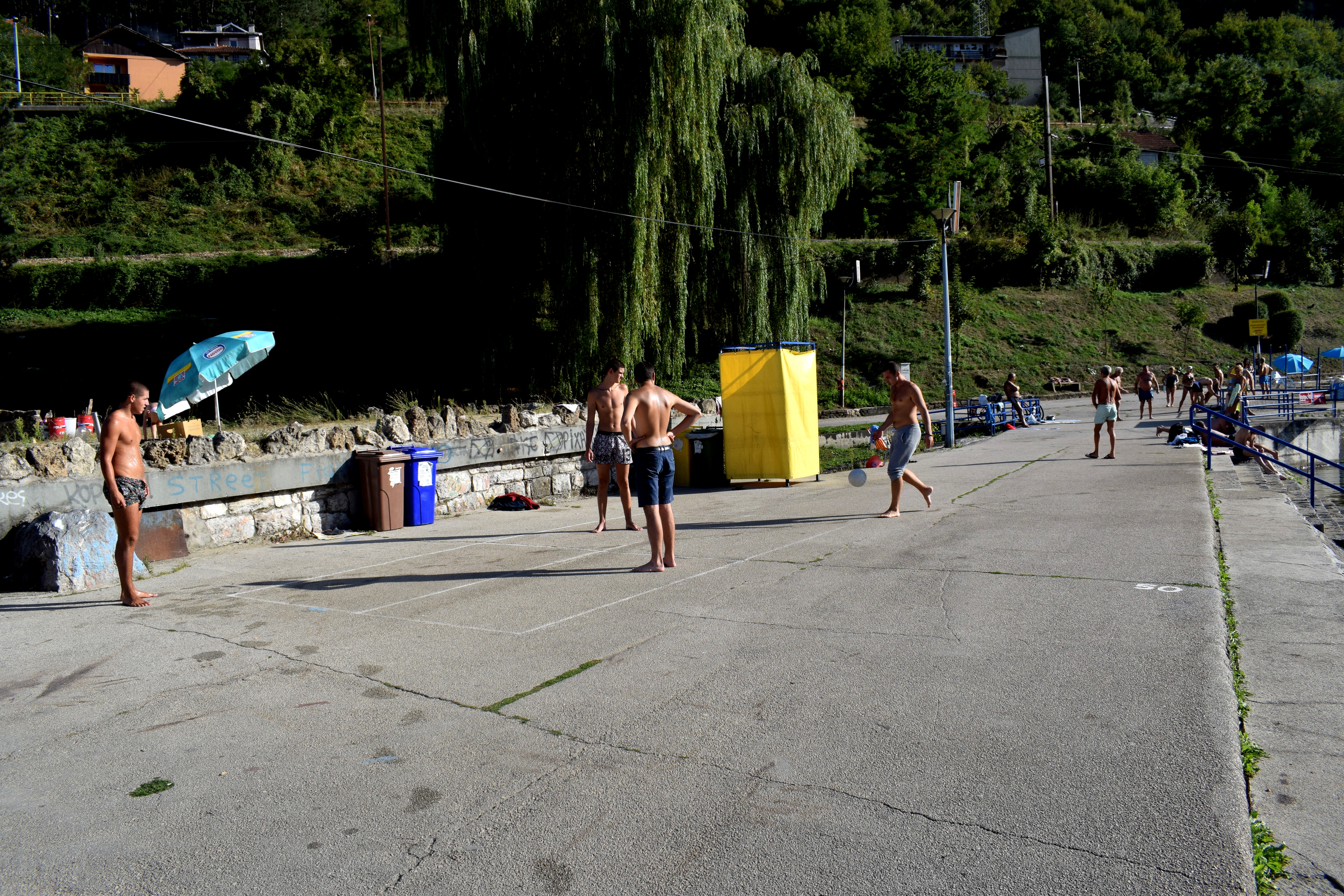 Occasionally fishing.
Occasionally fishing.
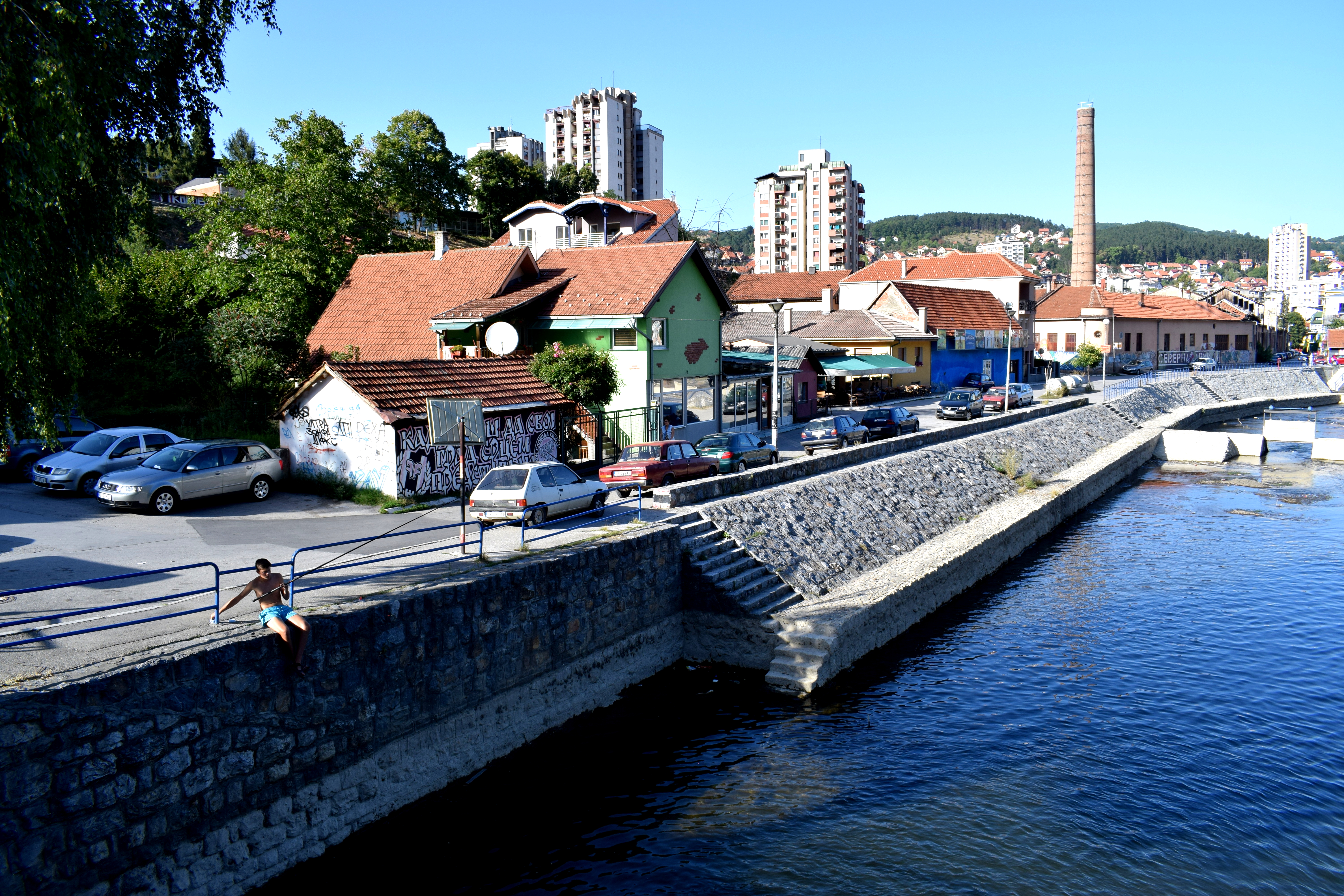 The embankment on the Djetinjia river near the dam.
The embankment on the Djetinjia river near the dam.
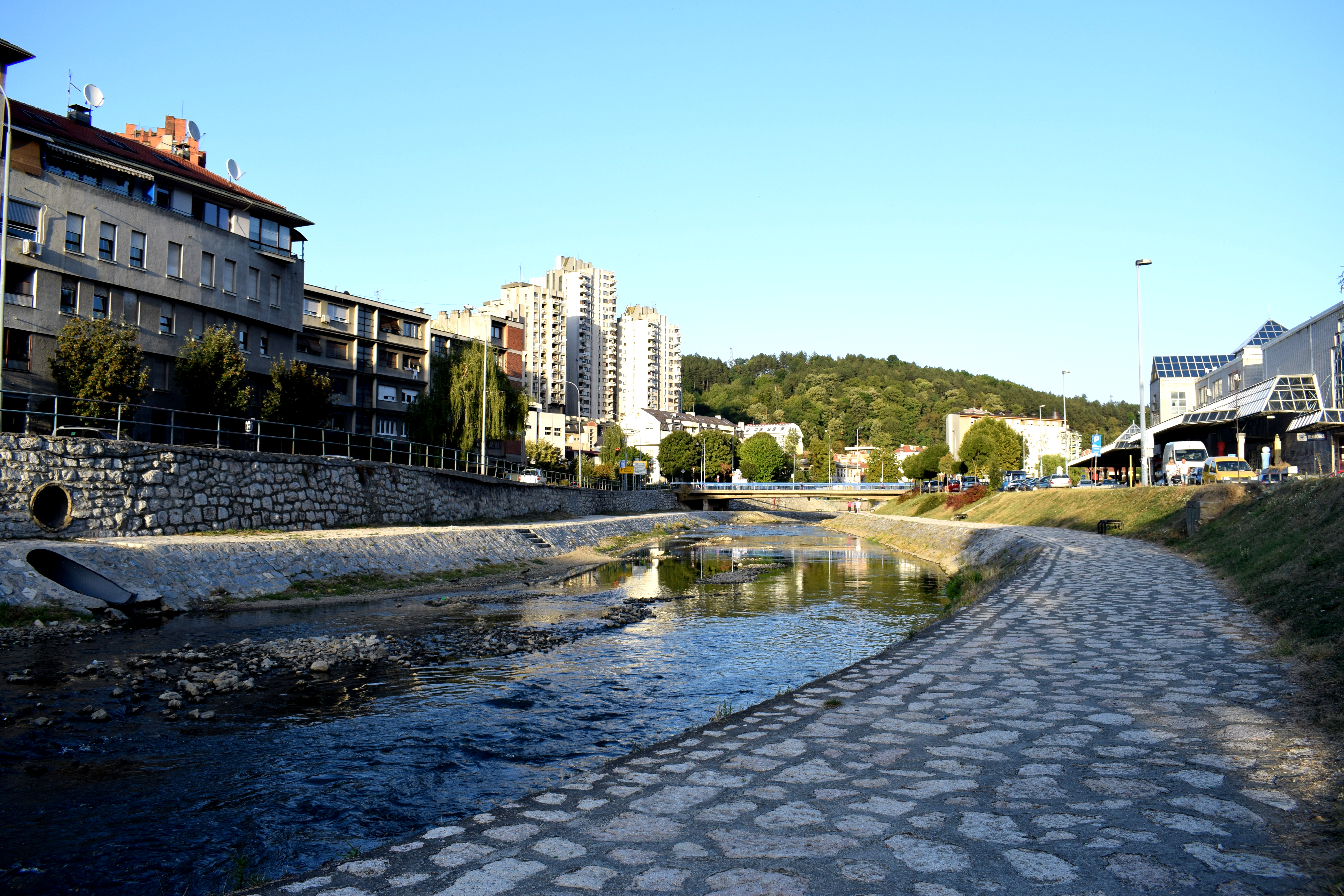 An old railway carriage converted into a restaurant.
An old railway carriage converted into a restaurant.
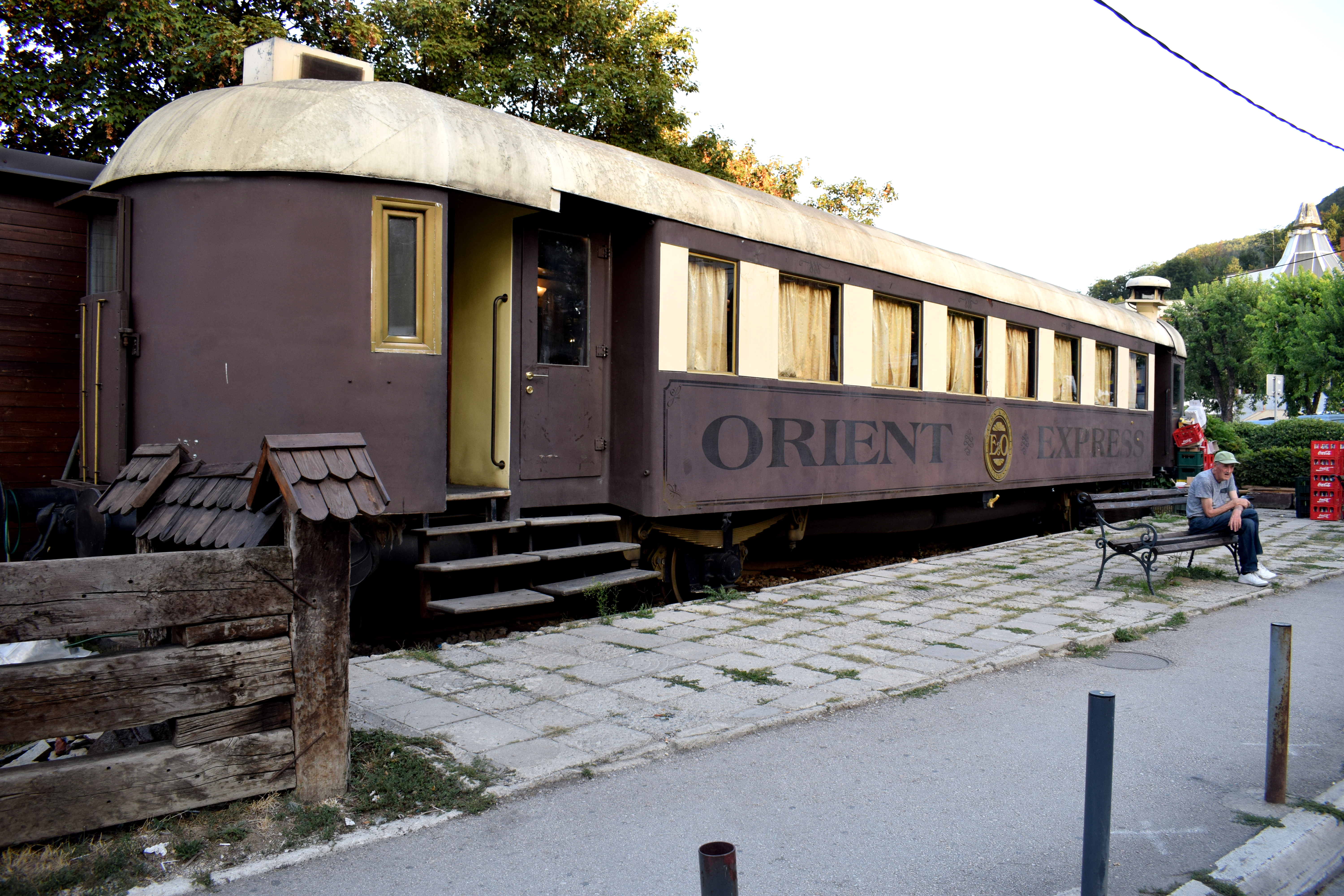 Kid’s playing in the center by the river.
Kid’s playing in the center by the river.
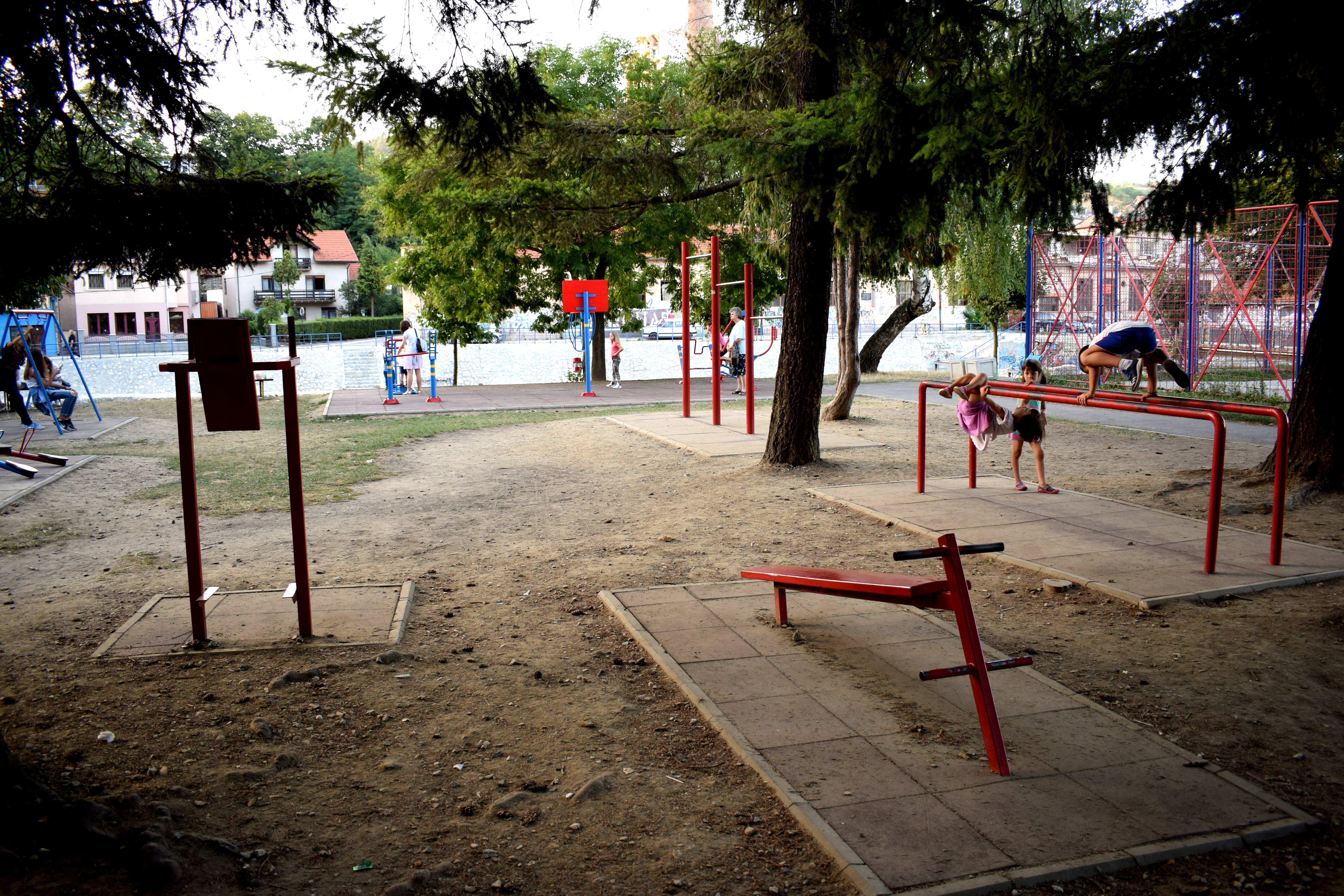 Walking toward the Hydroelectric dam. The Uzice Fortress is situation on top of the steep hill.
Walking toward the Hydroelectric dam. The Uzice Fortress is situation on top of the steep hill.
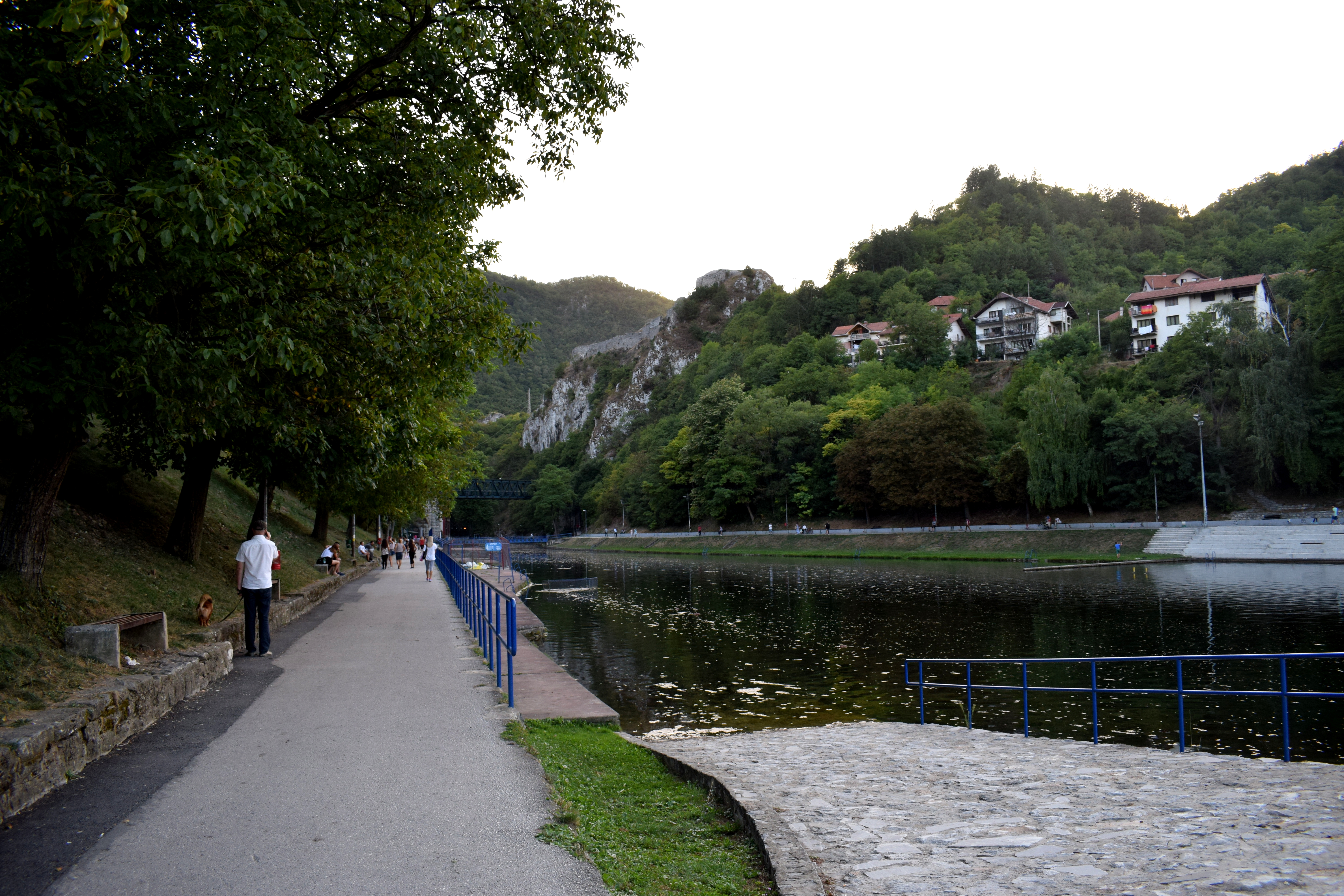 The first hydroelectric dam built in Serbia and one of the first in Europe is in Uzice, built in 1900. It was built using the same principles Nikola Tesla used to power the Niagara Falls dam.
The first hydroelectric dam built in Serbia and one of the first in Europe is in Uzice, built in 1900. It was built using the same principles Nikola Tesla used to power the Niagara Falls dam.
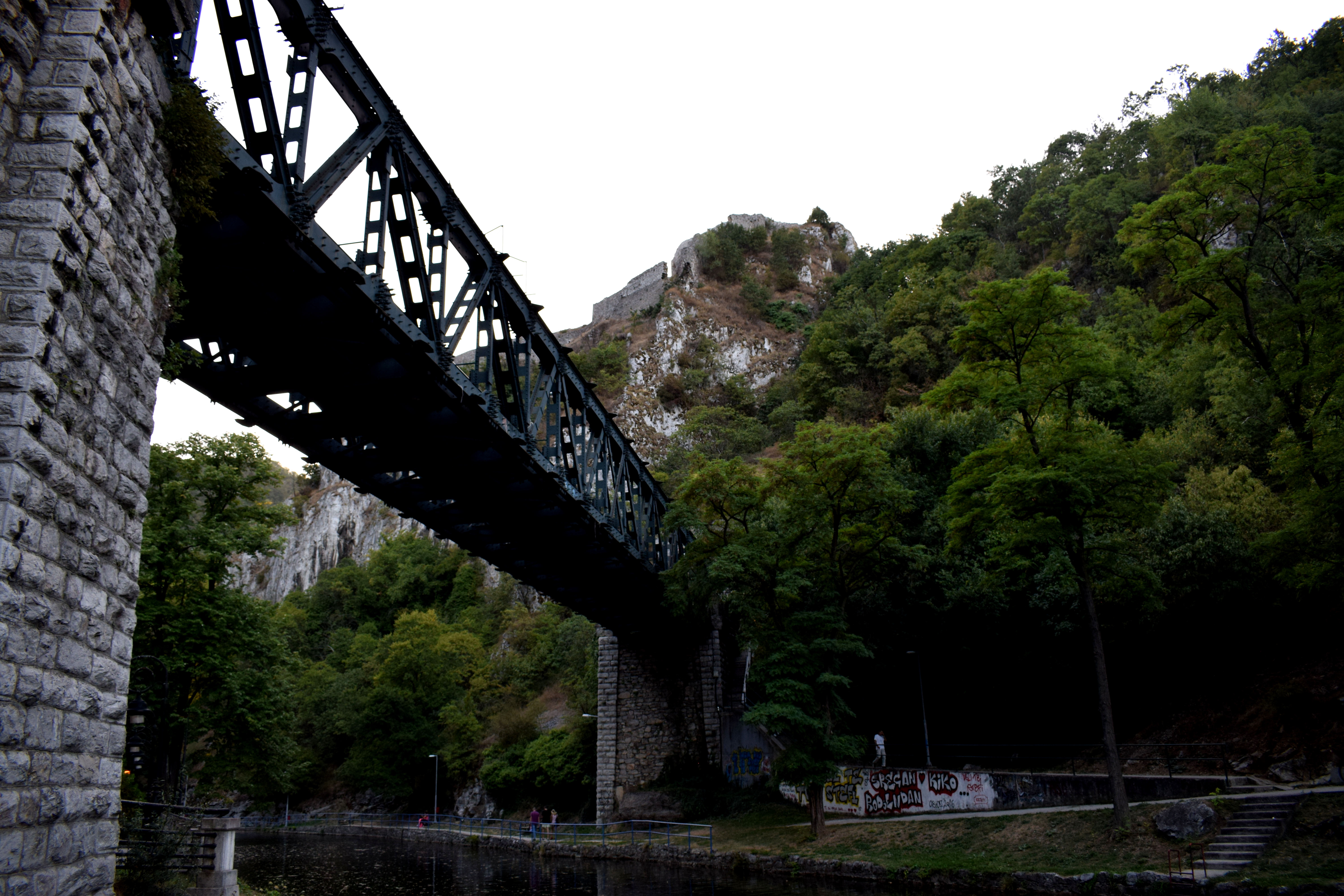 Uzice’s old upper town fortress is located above the dam at the top of the hill.
Uzice’s old upper town fortress is located above the dam at the top of the hill.
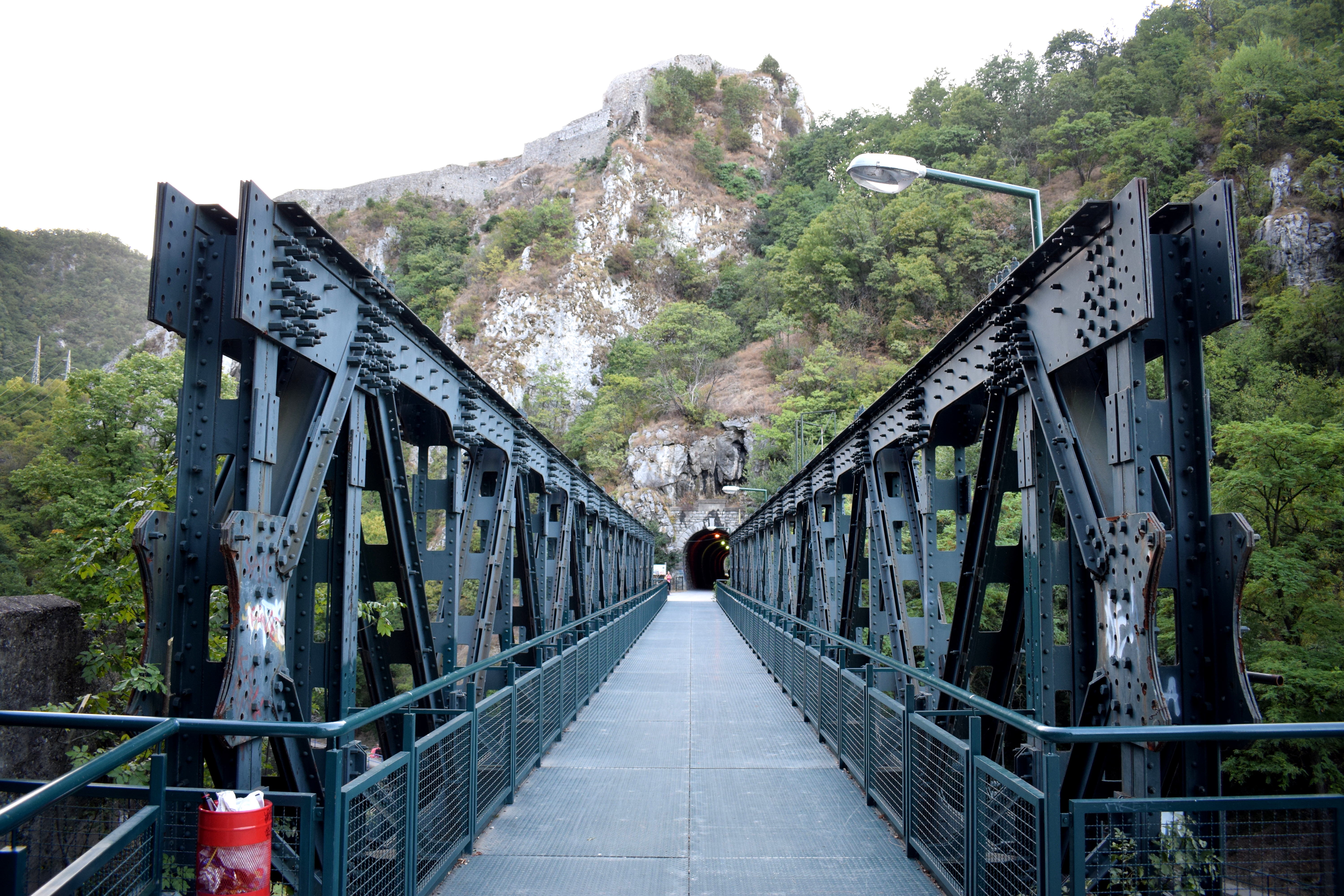 The tunnel above the hill has now been converted into a nature walkway spanning several kilometers using old WWII bunkers that were neglected until recently.
The tunnel above the hill has now been converted into a nature walkway spanning several kilometers using old WWII bunkers that were neglected until recently.
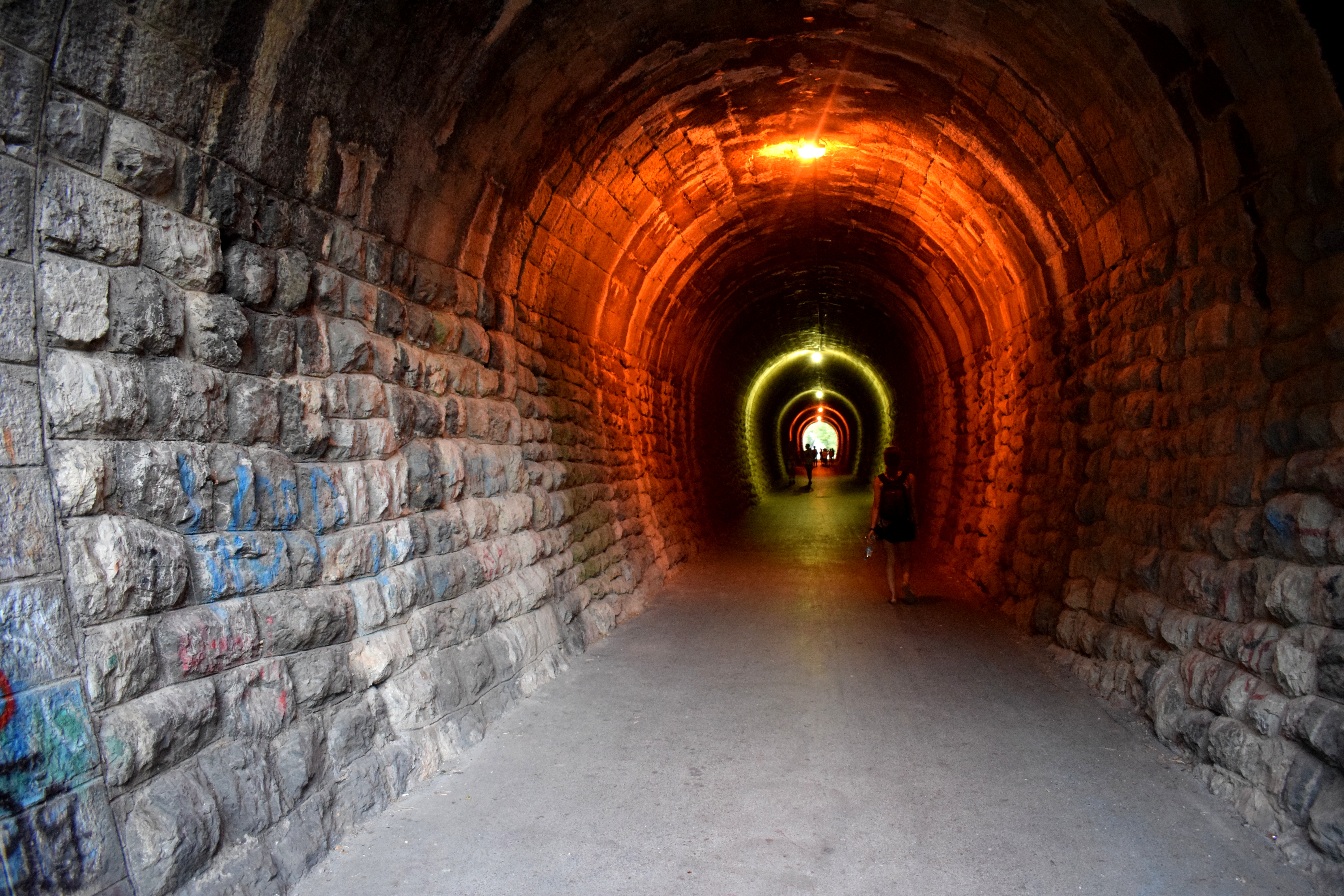 There are plans to extend the path several more kilometers and turn it into a full-scale cycling path.
There are plans to extend the path several more kilometers and turn it into a full-scale cycling path.
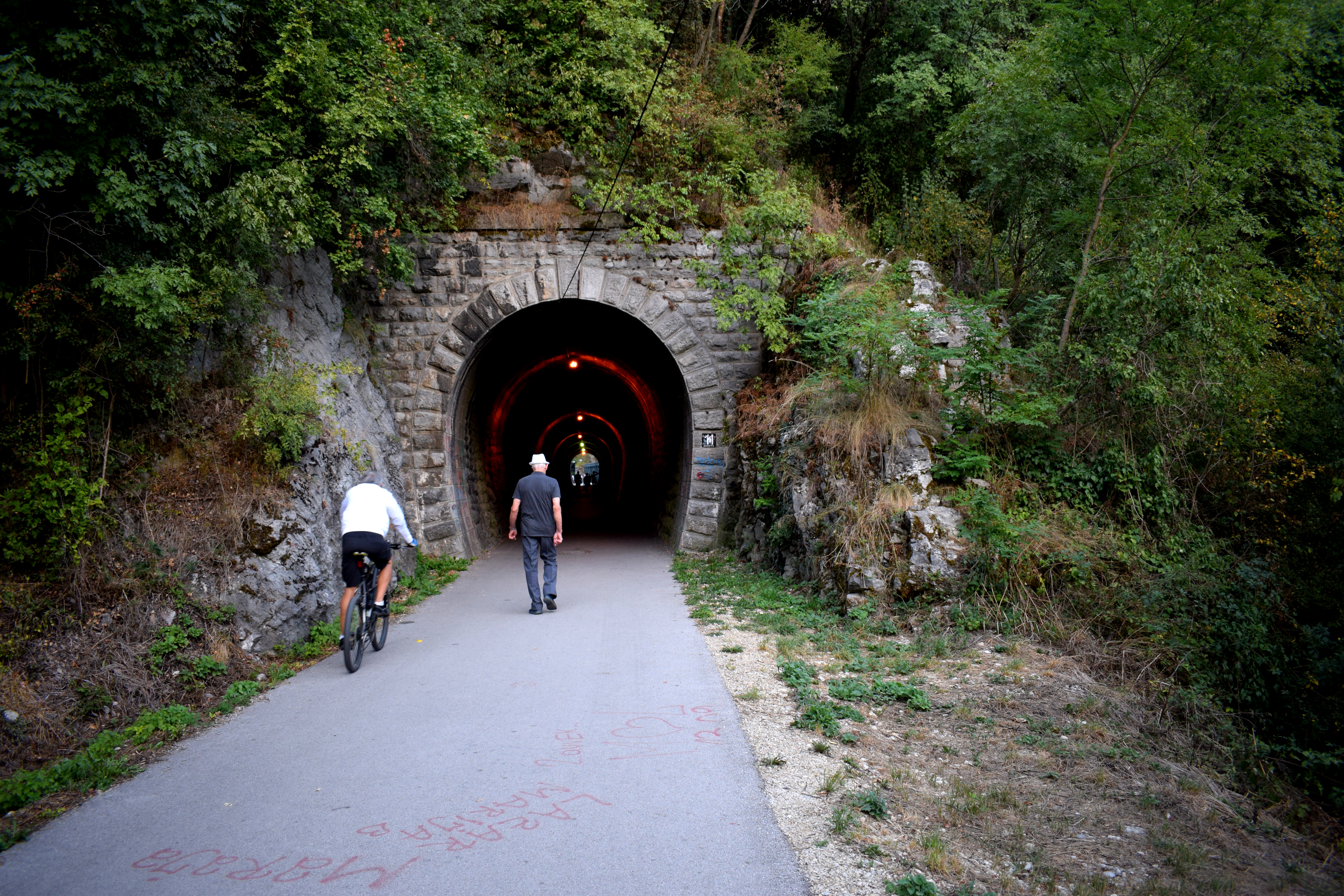 Despite being over 100 years old, the dam still operates today.
Despite being over 100 years old, the dam still operates today.
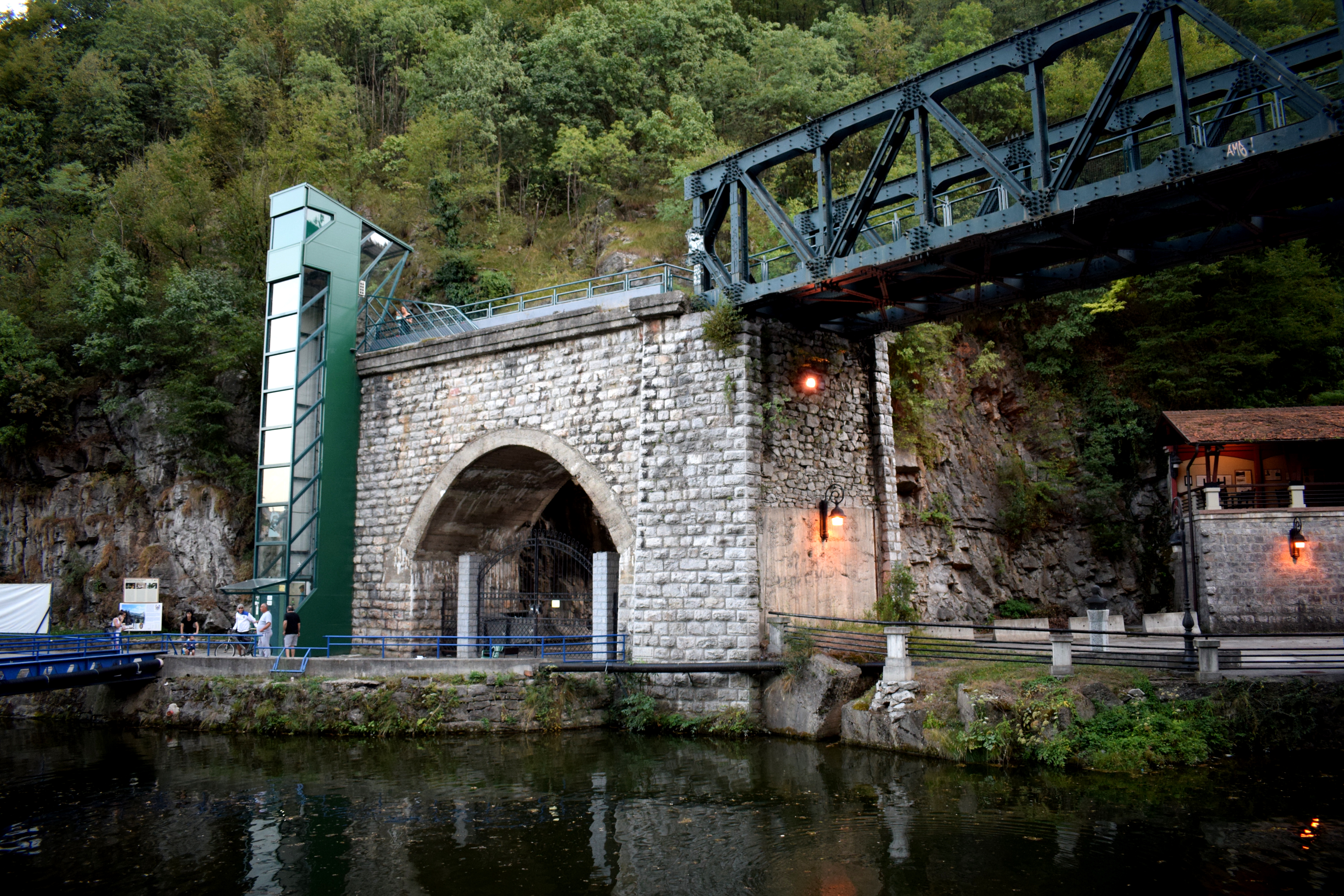
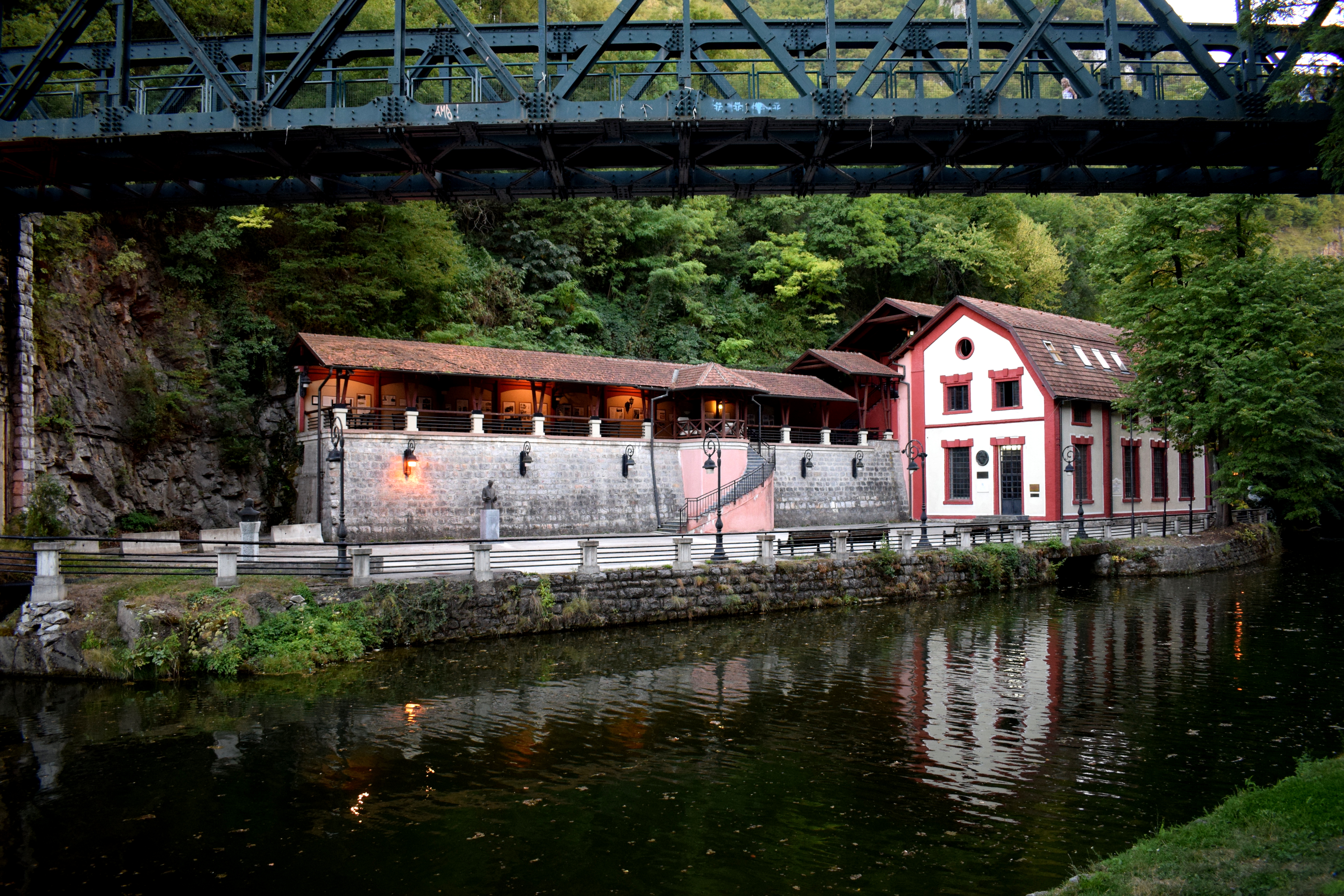 The mountains surrounding Uzice.
The mountains surrounding Uzice.
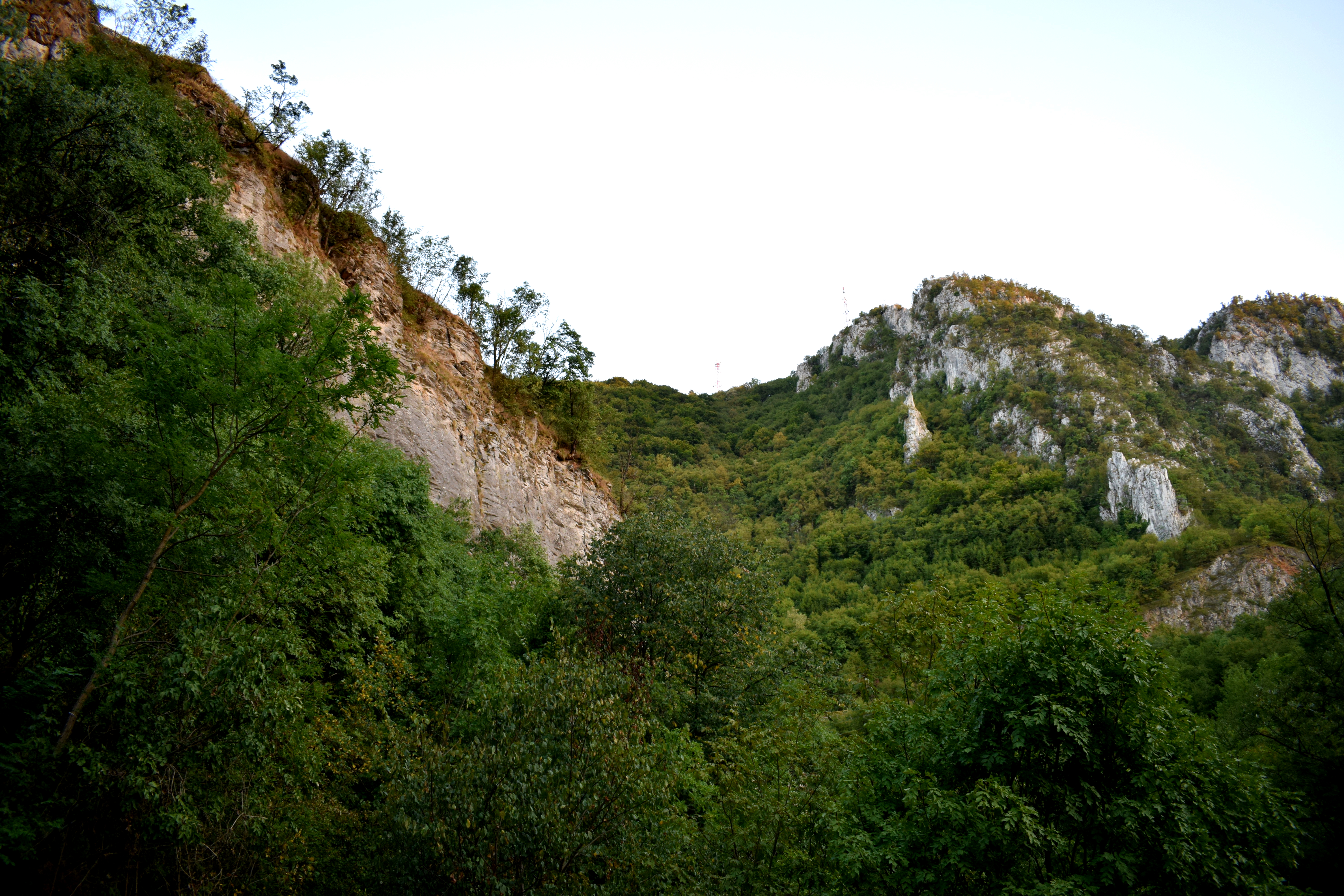
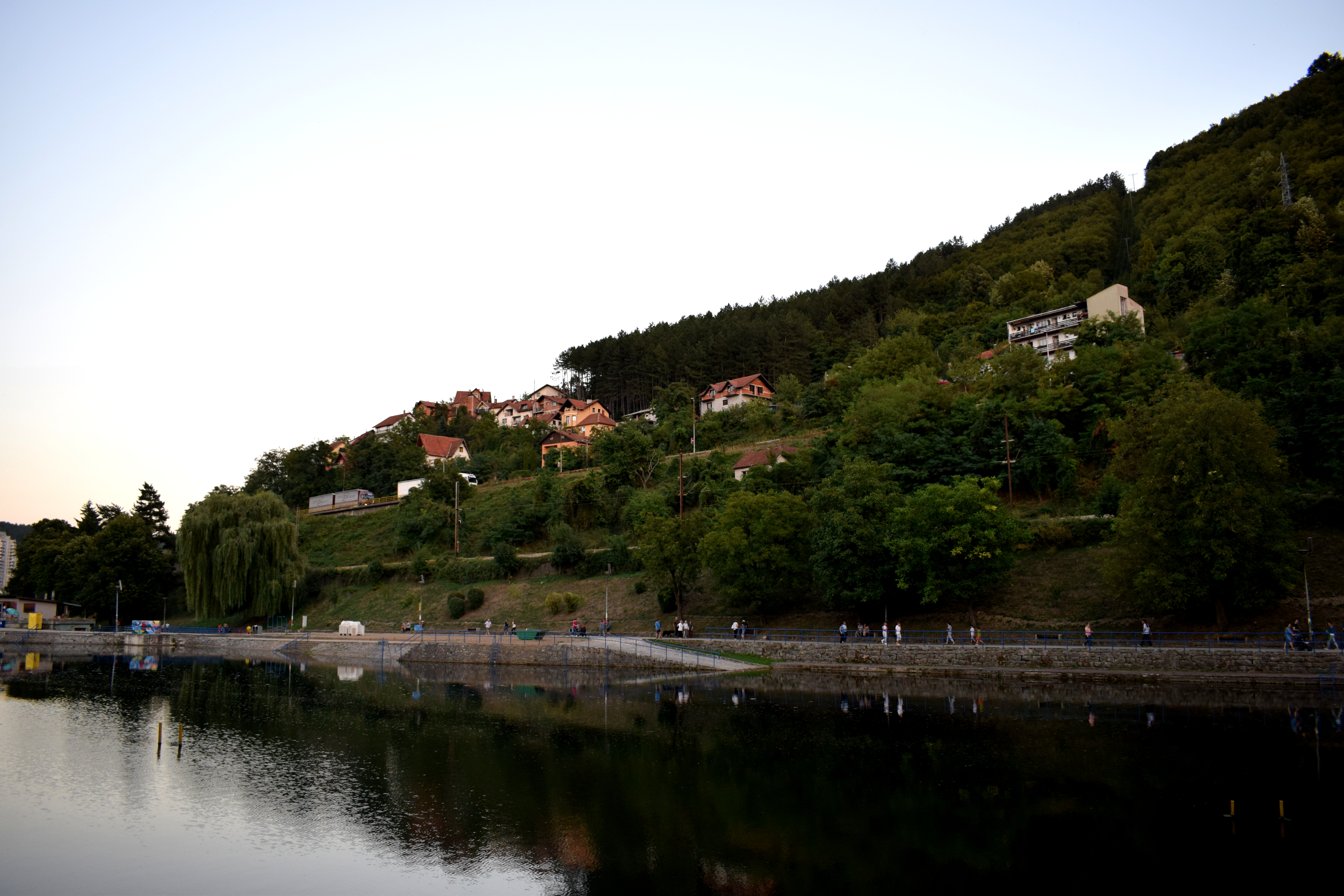 Back in the center at Dimitri Tucovic Street.
Back in the center at Dimitri Tucovic Street.
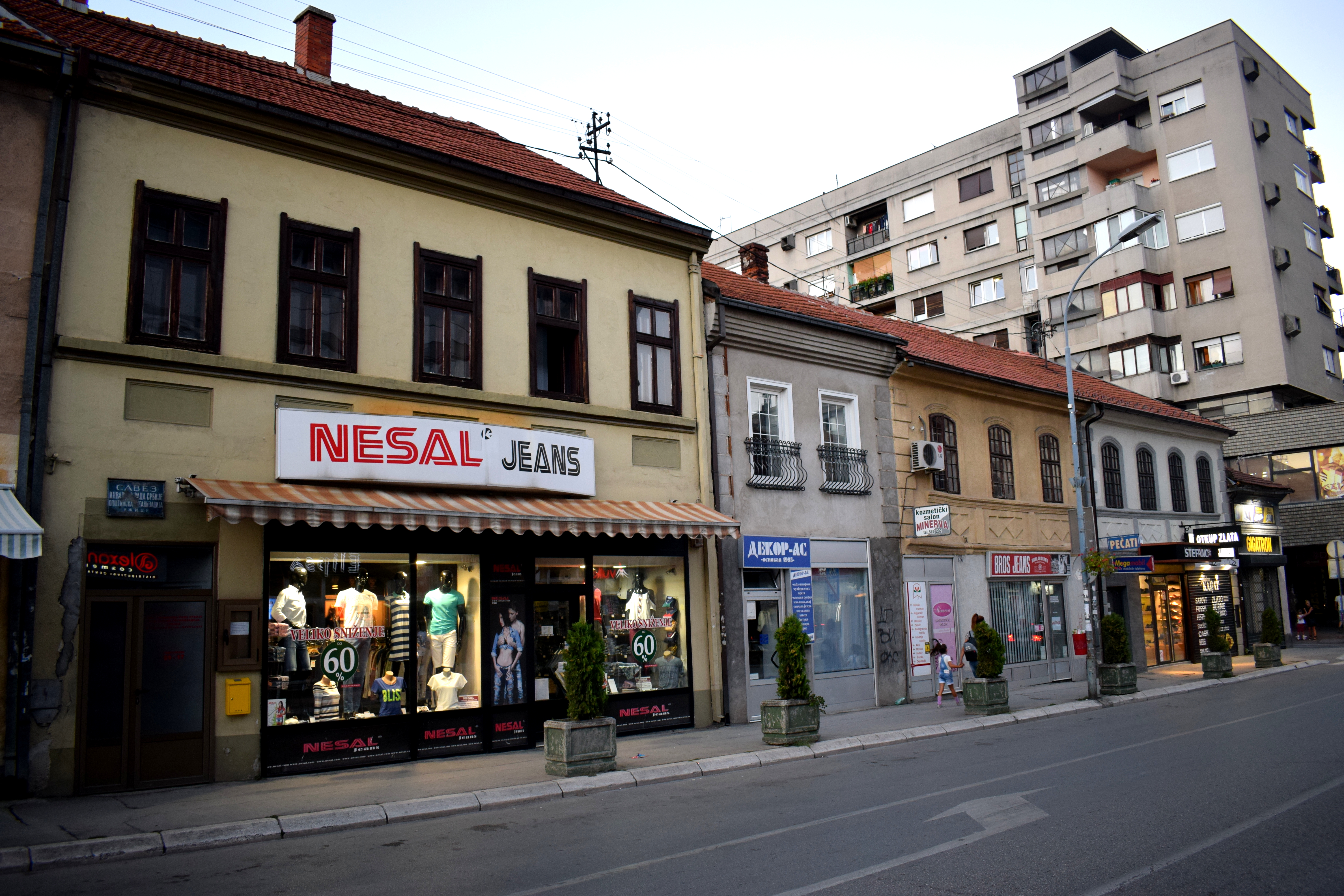
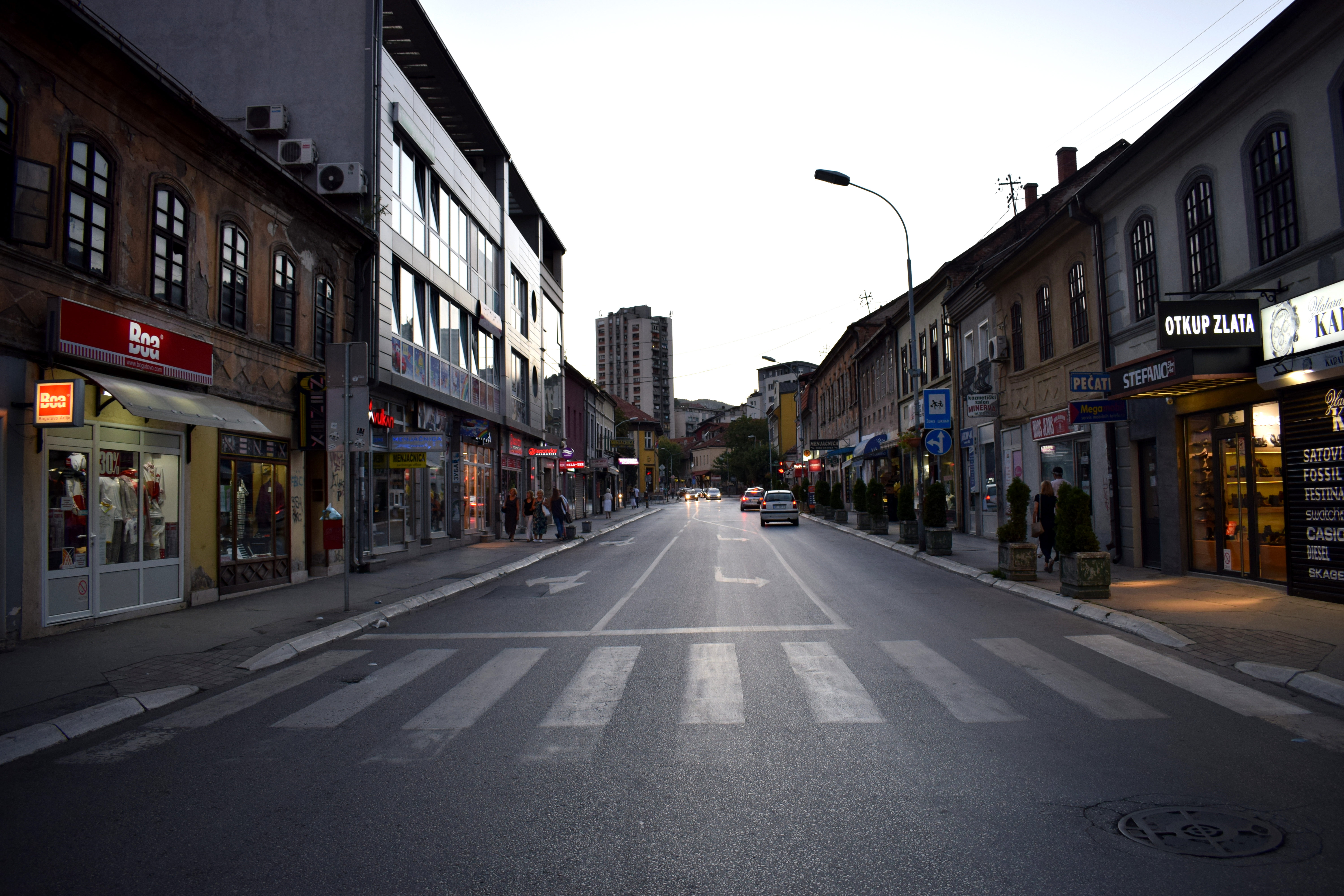
All in all, Uzice is a rewarding city to visit in the Balkans. Located off the tourist path with few foreigners visiting during the year, the city has enormous potential to develop into a more popular tourist destination.
It is already a popular area for outdoor sports activities offering great spots to go rock climbing, hiking, rafting and cycling. It can build on this reputation by becoming a hub for other outdoor activities and capitalize on its proximity to the Tara and Zlatibor national parks in Serbia.
Uzice is also located close to Drvengrad, a wooden village built by the famous Serbian filmmaker Emir Kusturica. And just 14 kilometers from the Kadinjaca WWII monument, an example of a series of enormous Yugoslav WWII monuments that were built across Yugoslavia in the 1960’s and 1970’s at important battle sites against Germany. Today the monument stands largely abandoned despite its cultural significance during socialist times.
Some of the things I didn’t get to do when visiting was to hike up to the Uzice Fortress, one of the oldest fortresses in the region dating back to the middle ages. I also did not visit the tallest statue of Josip Broz Tito, the founder and leader of communist Yugoslavia from 1945-1980. These are must do’s on any visit to Uzice, but we were limited by time.
Uzice will benefit greatly when Serbia builds a highway connecting Belgrade with Sarajevo which will pass by Uzice. Once Sarajevo is connected with Mostar and Mostar to Croatia’s highway in Dalmatia, the area will receive a modern fully functioning motorway that should open the region up to more tourists and speed up development. Until then, Uzice will most likely remain off the radar, but that’s all the more reason to visit, before everybody knows about the city.
